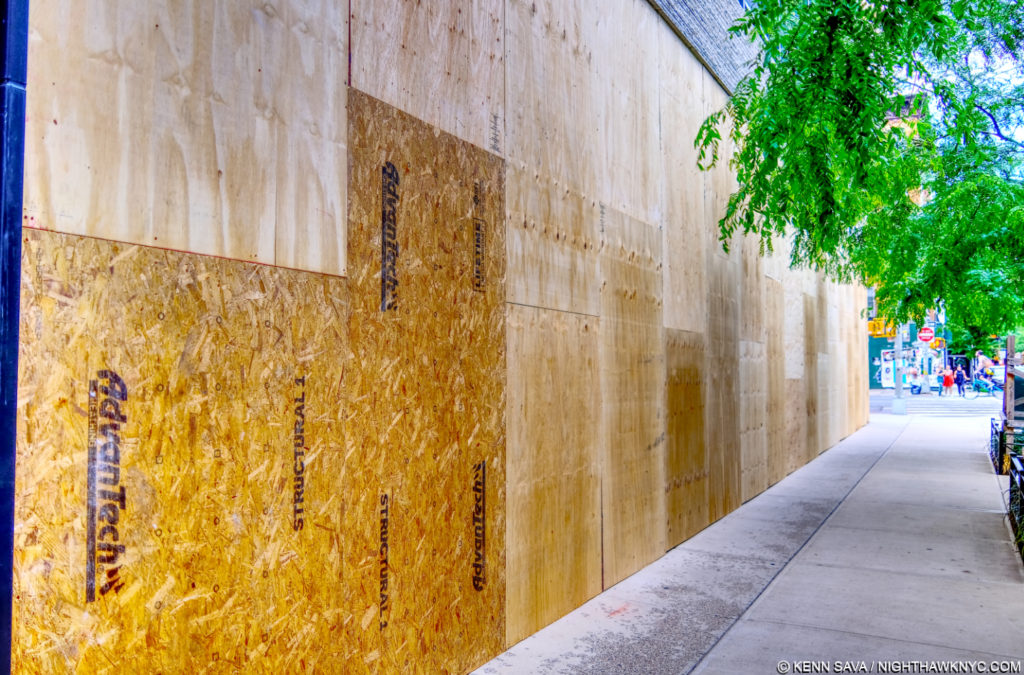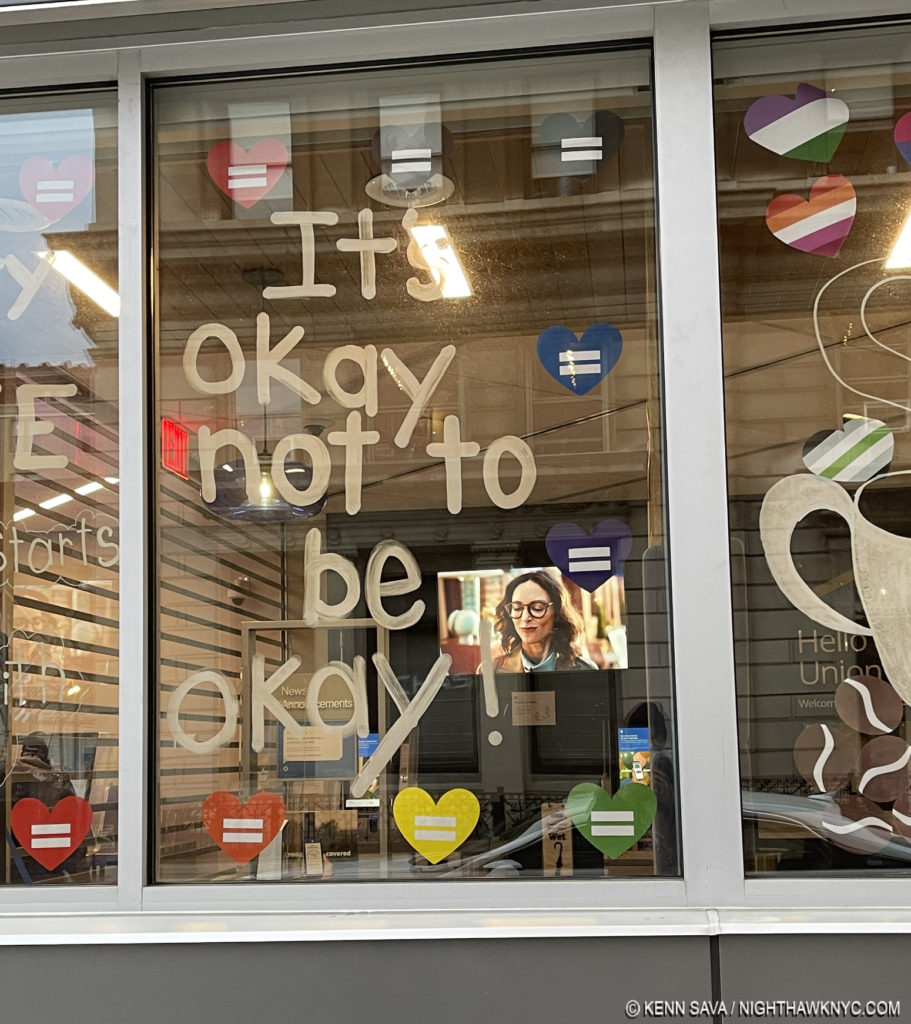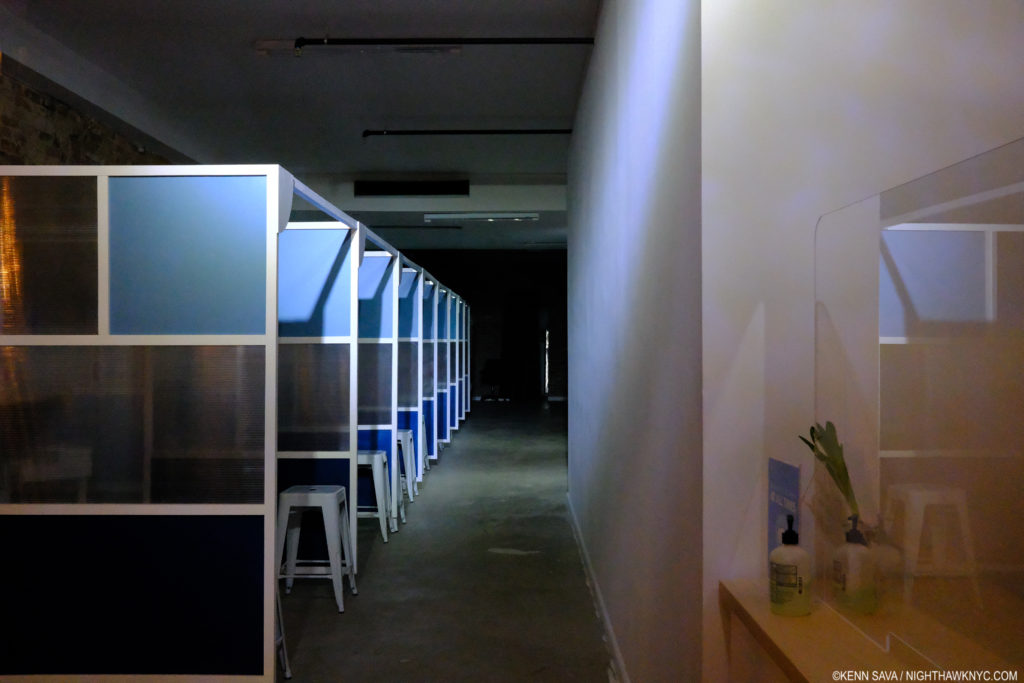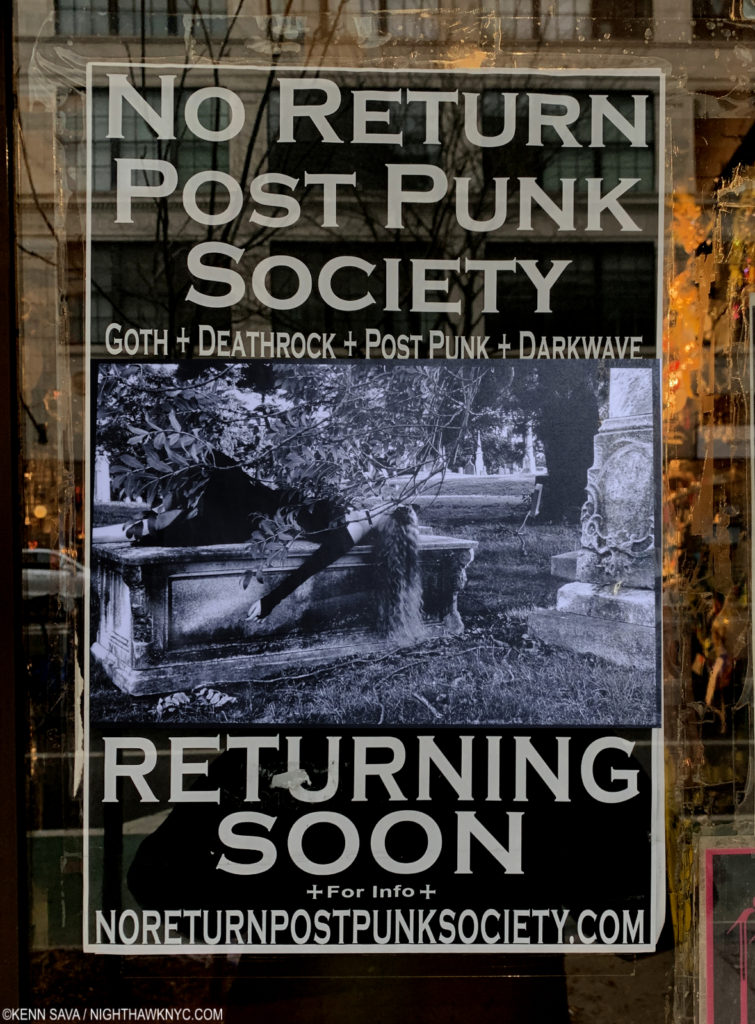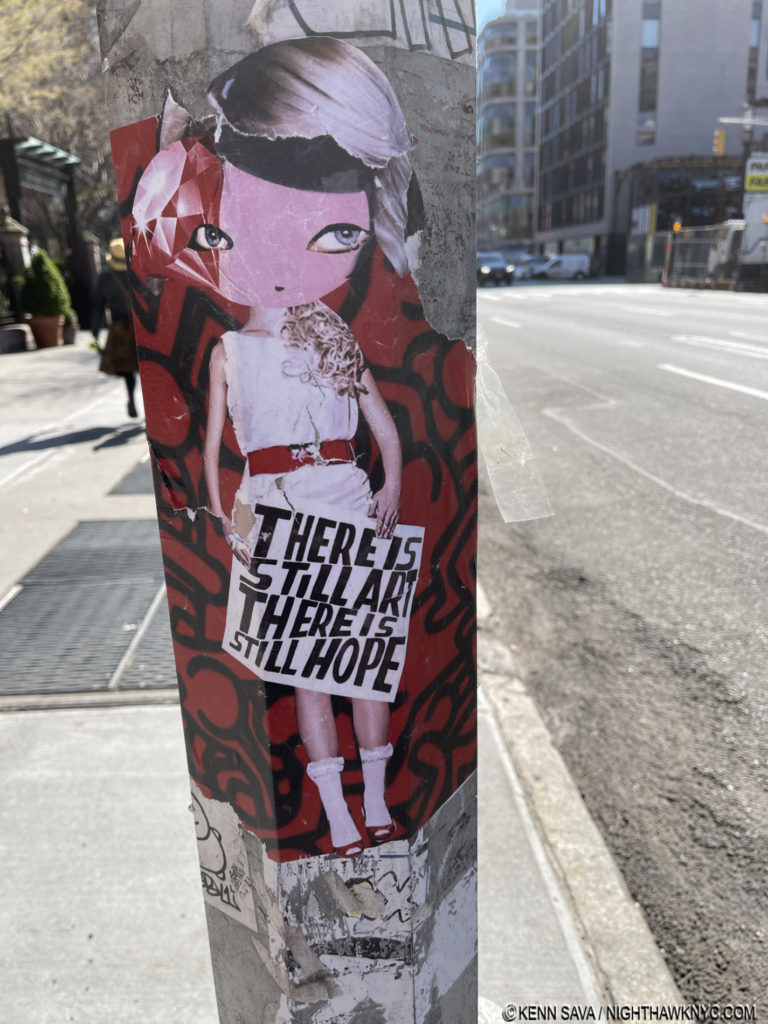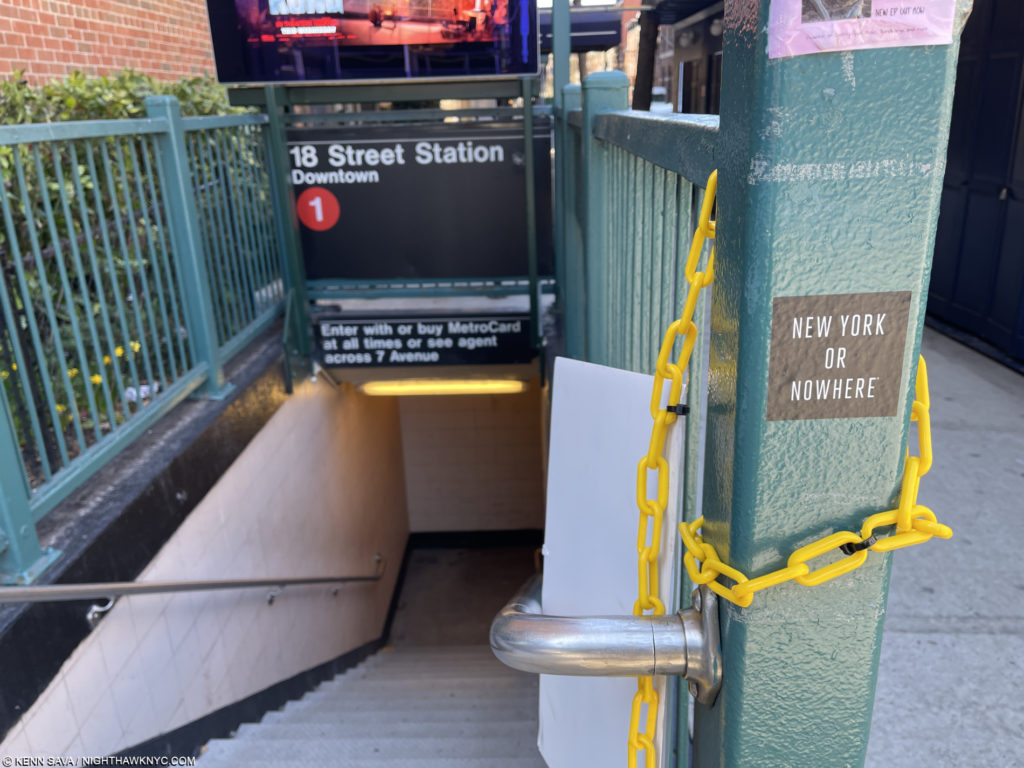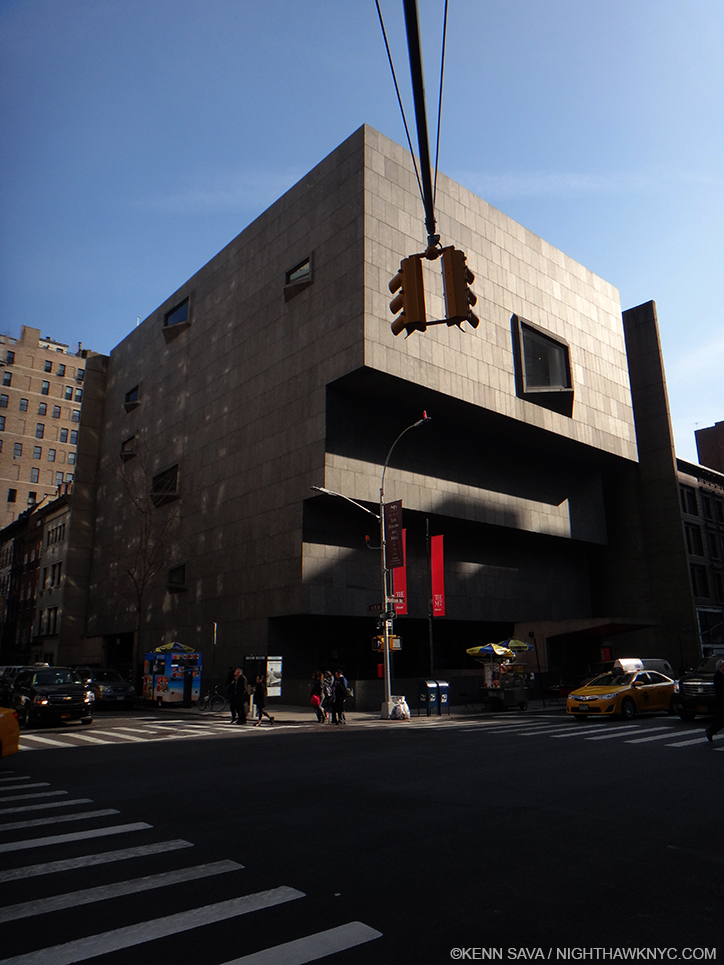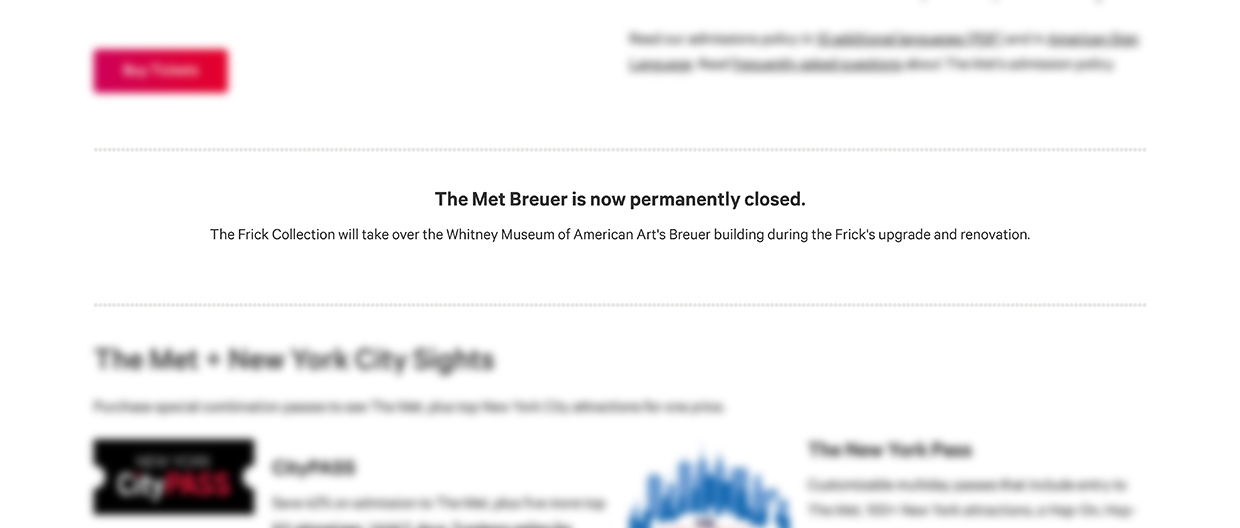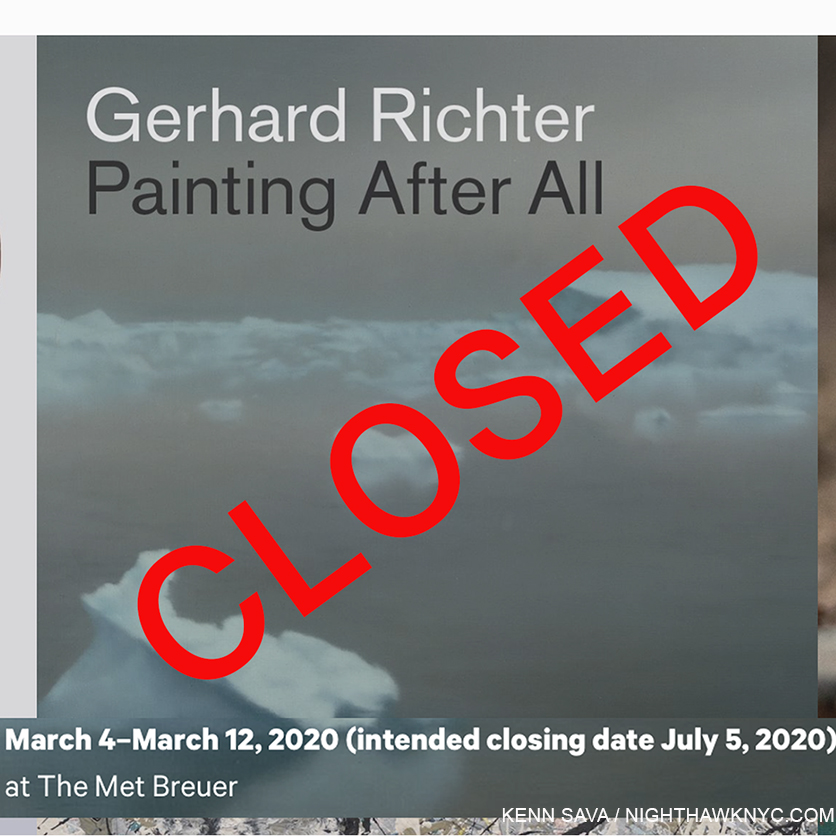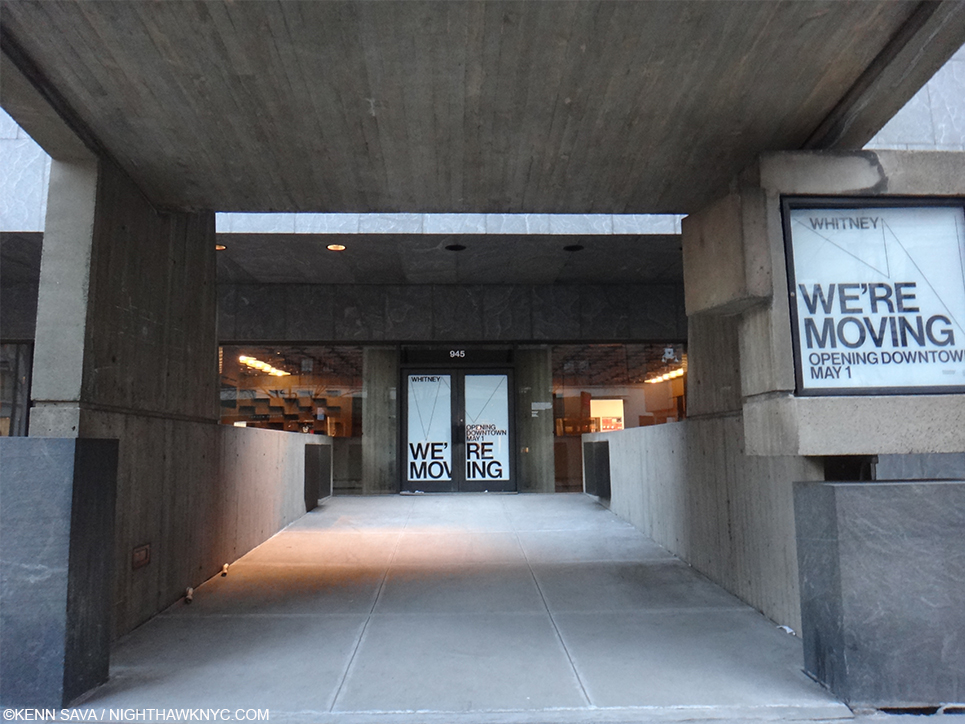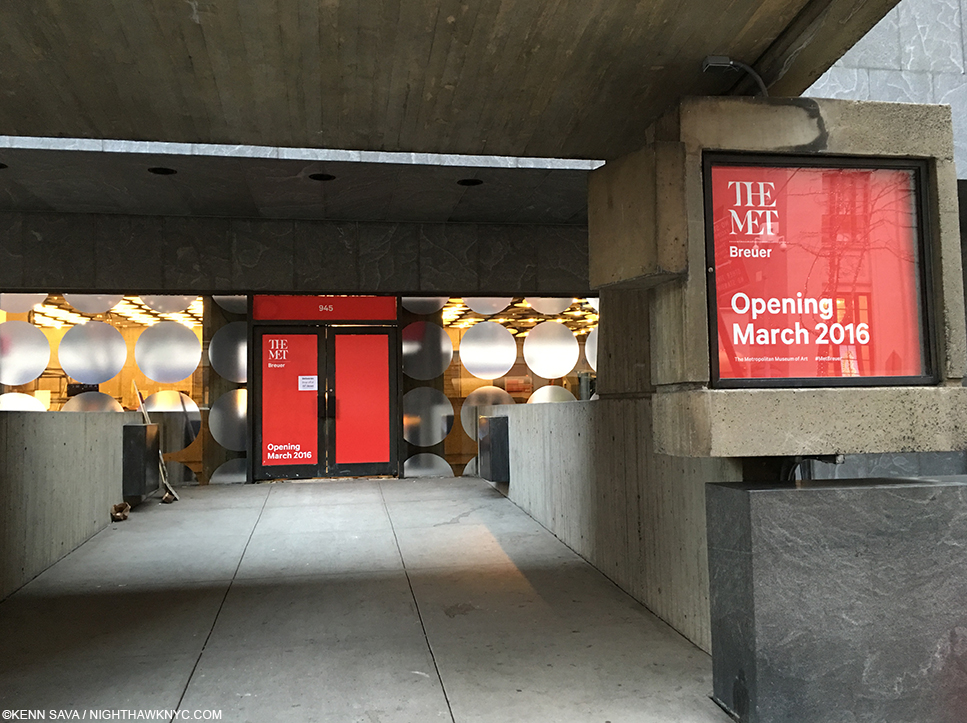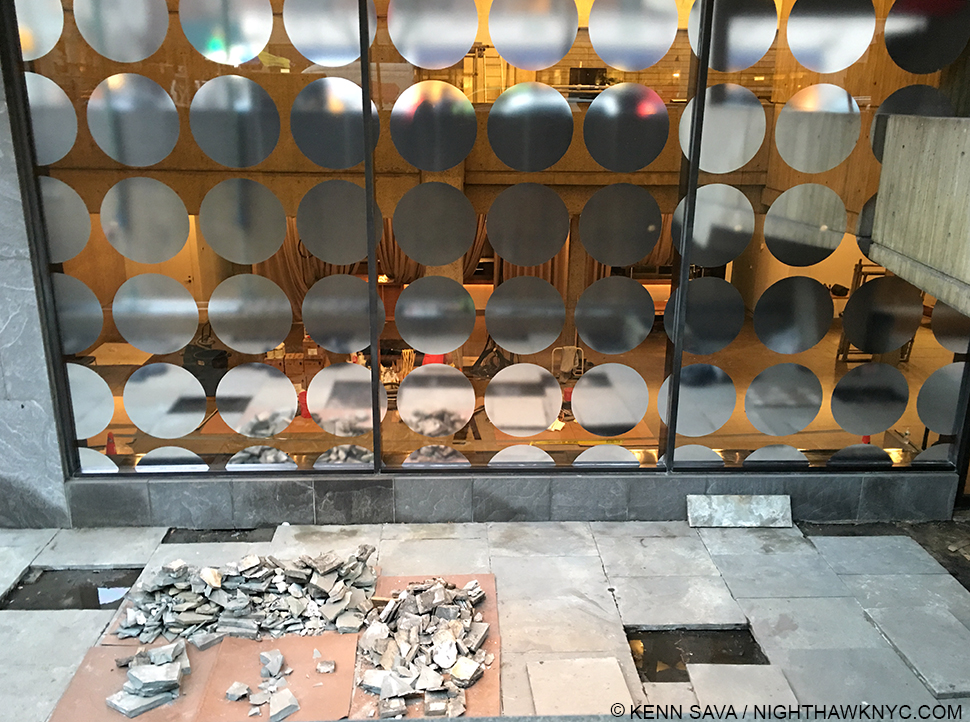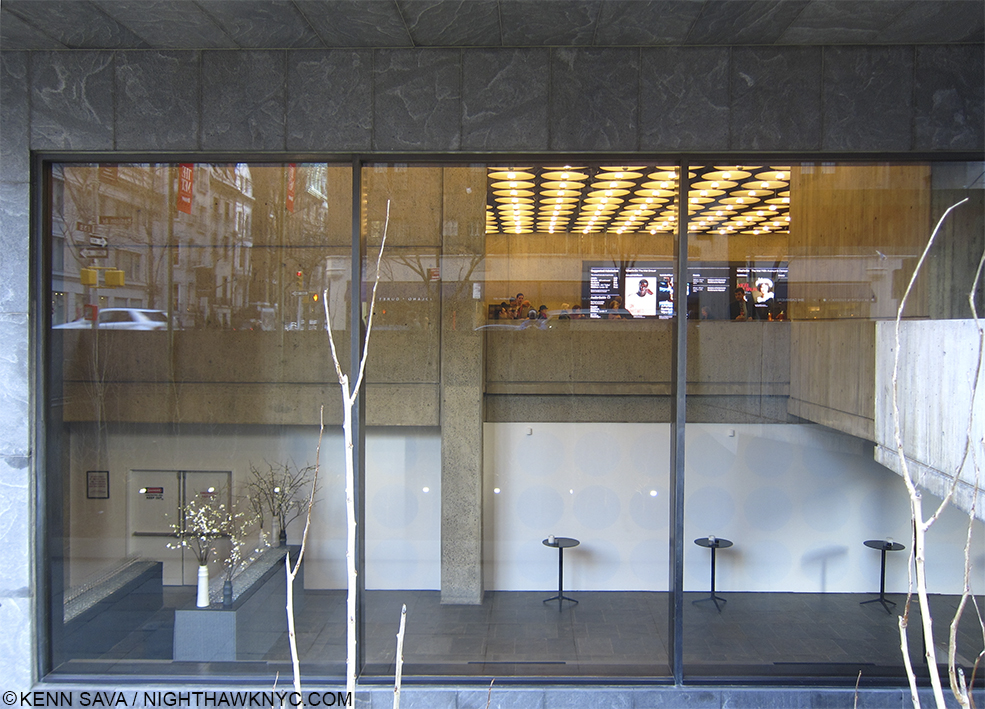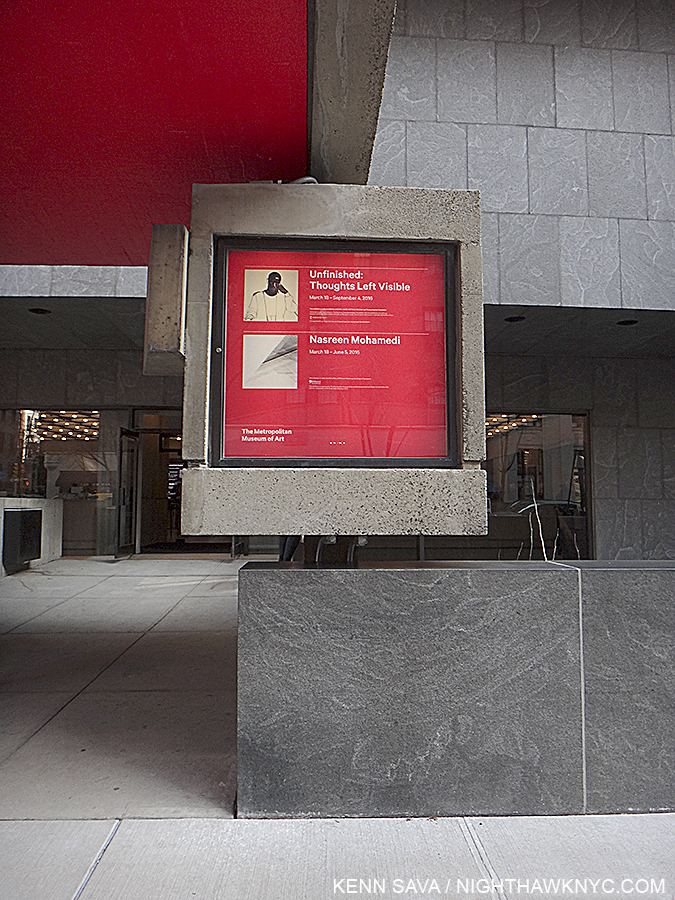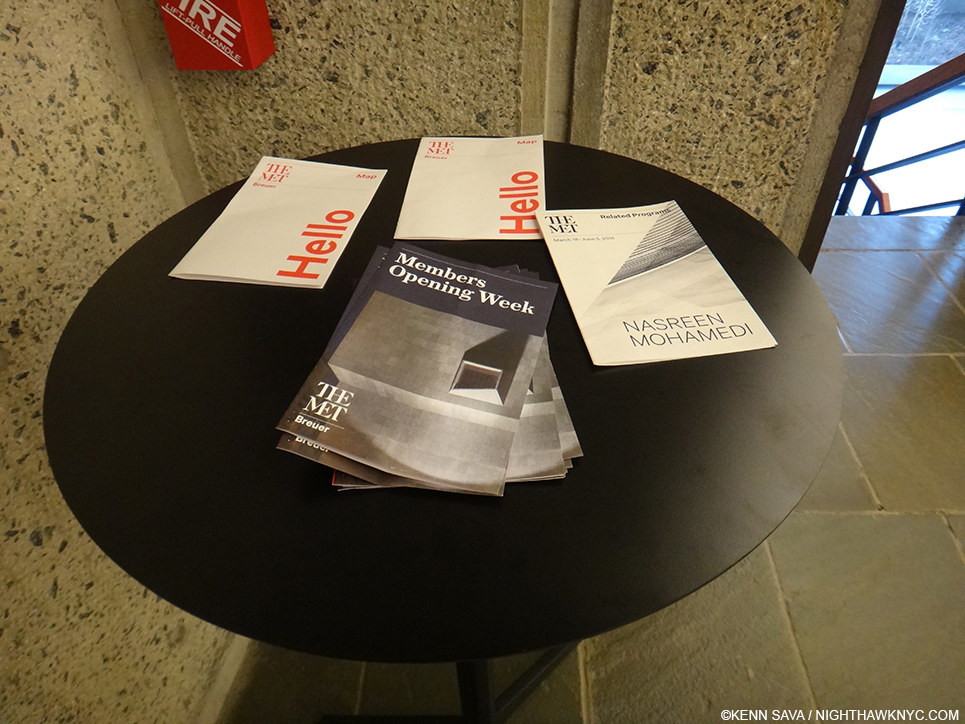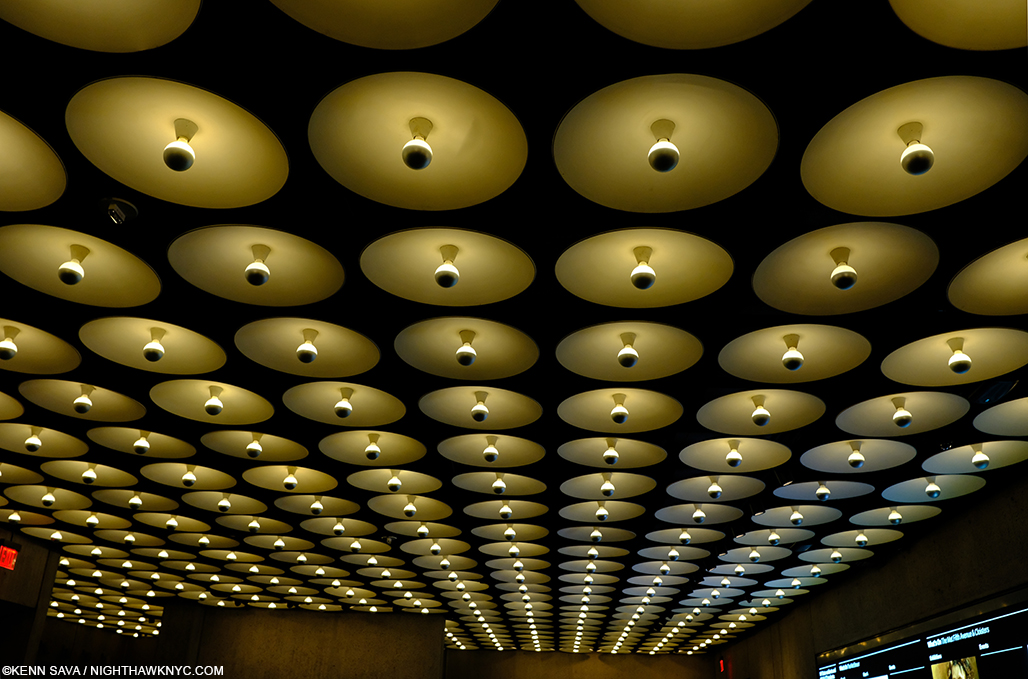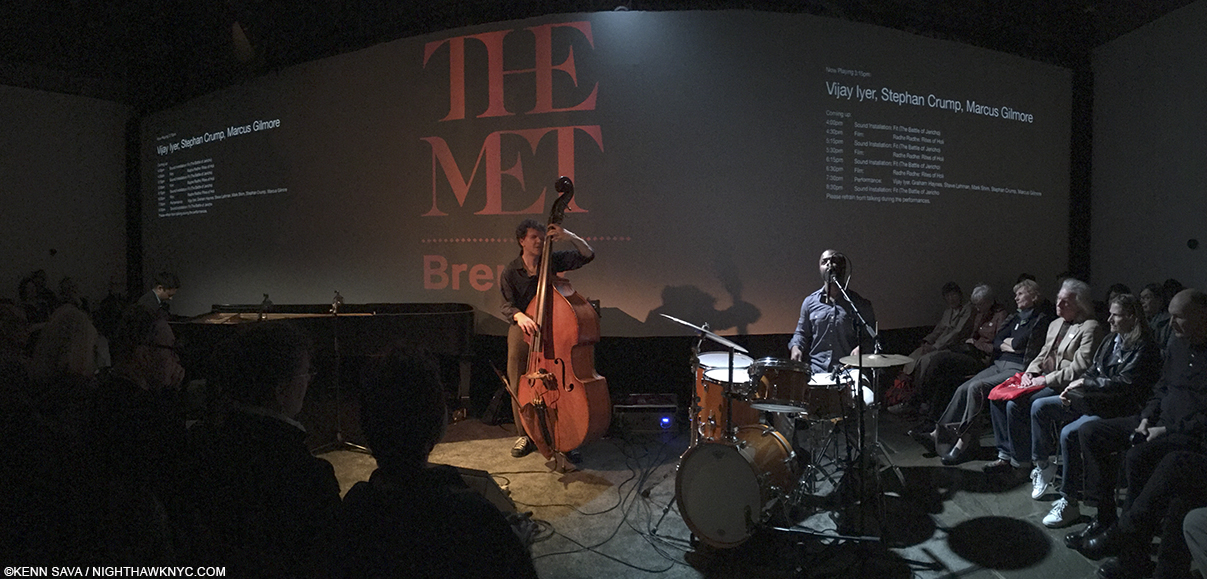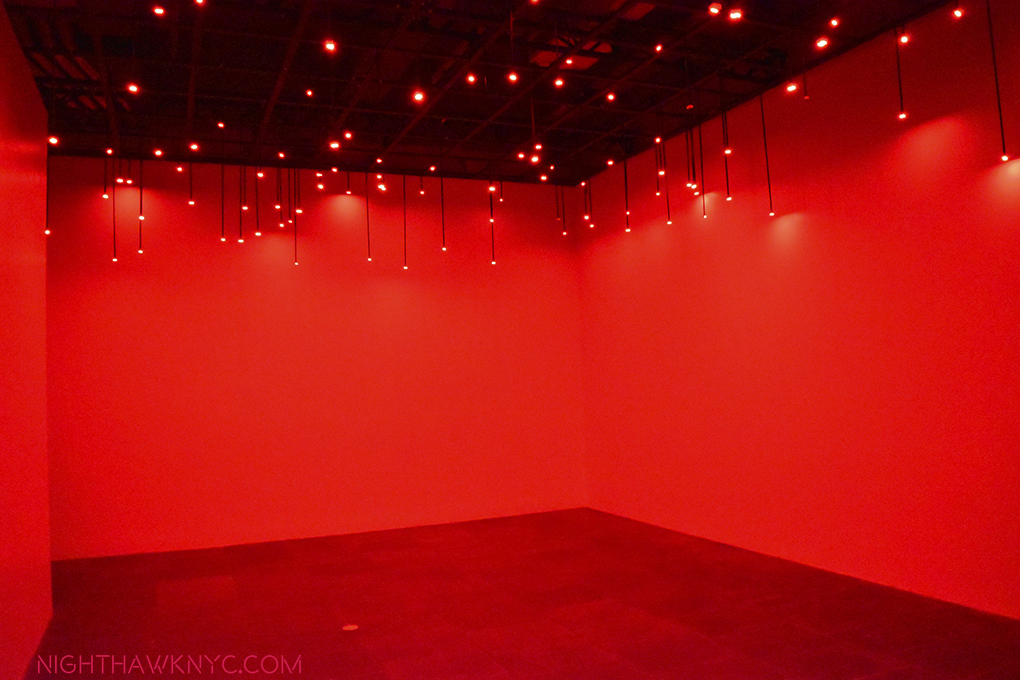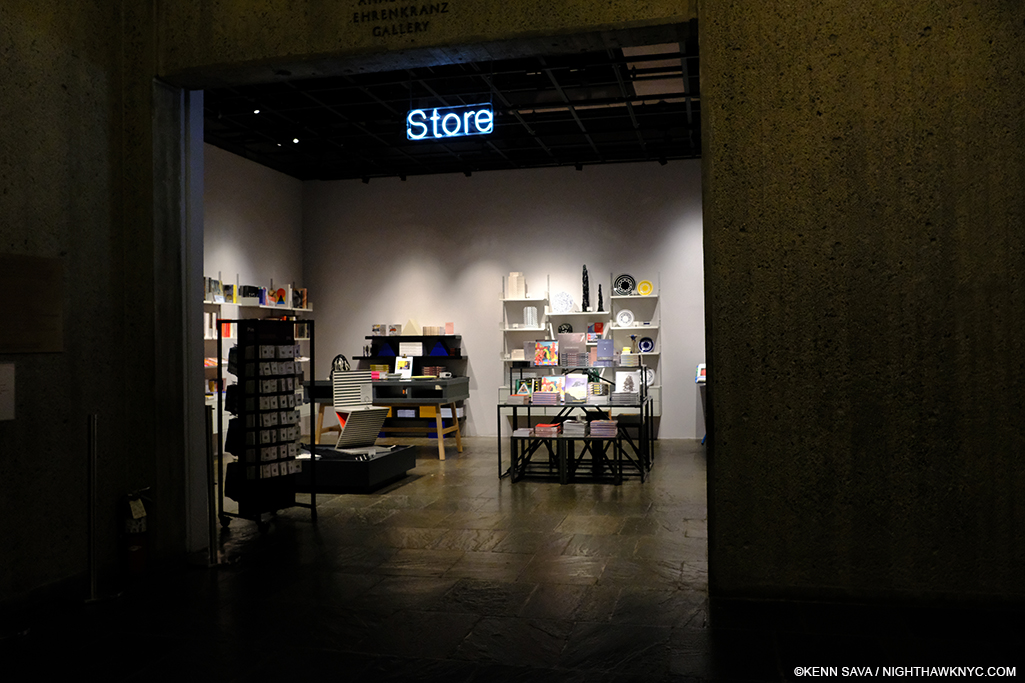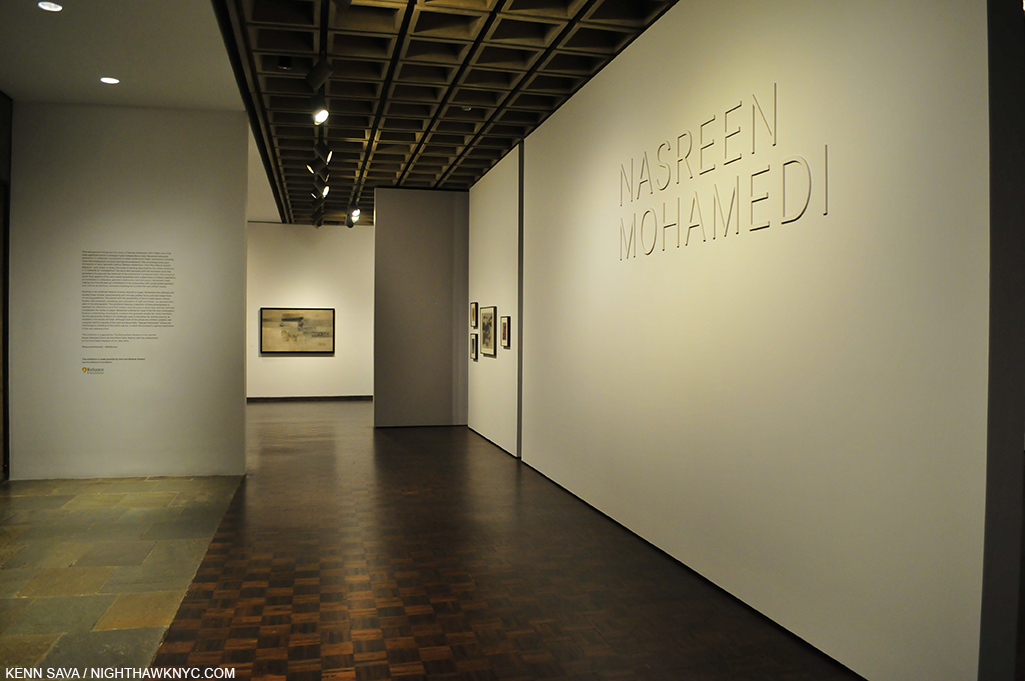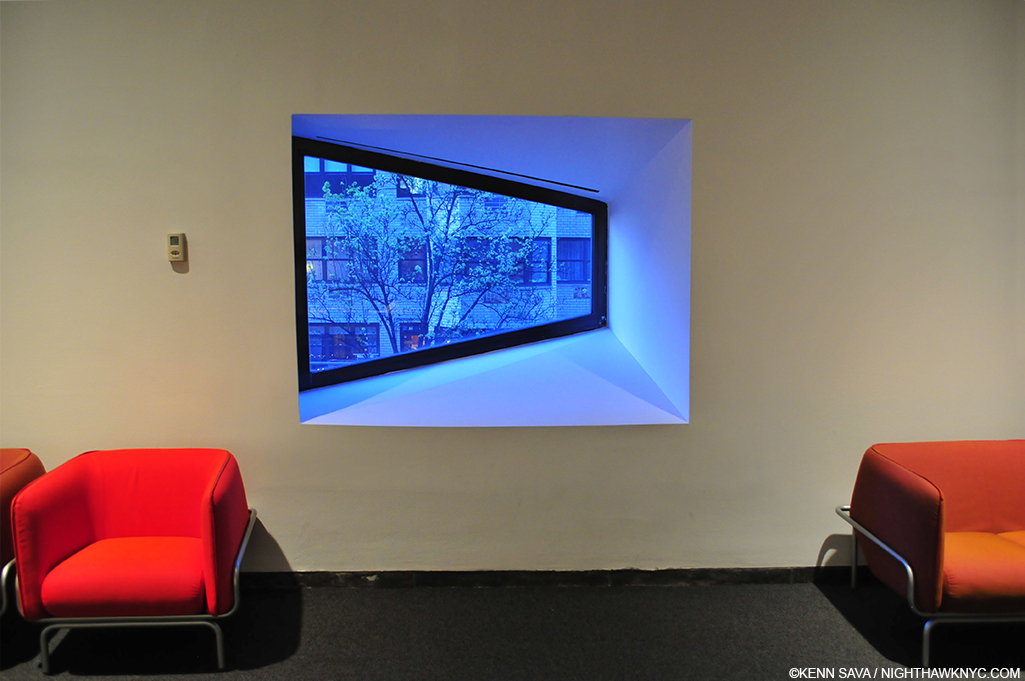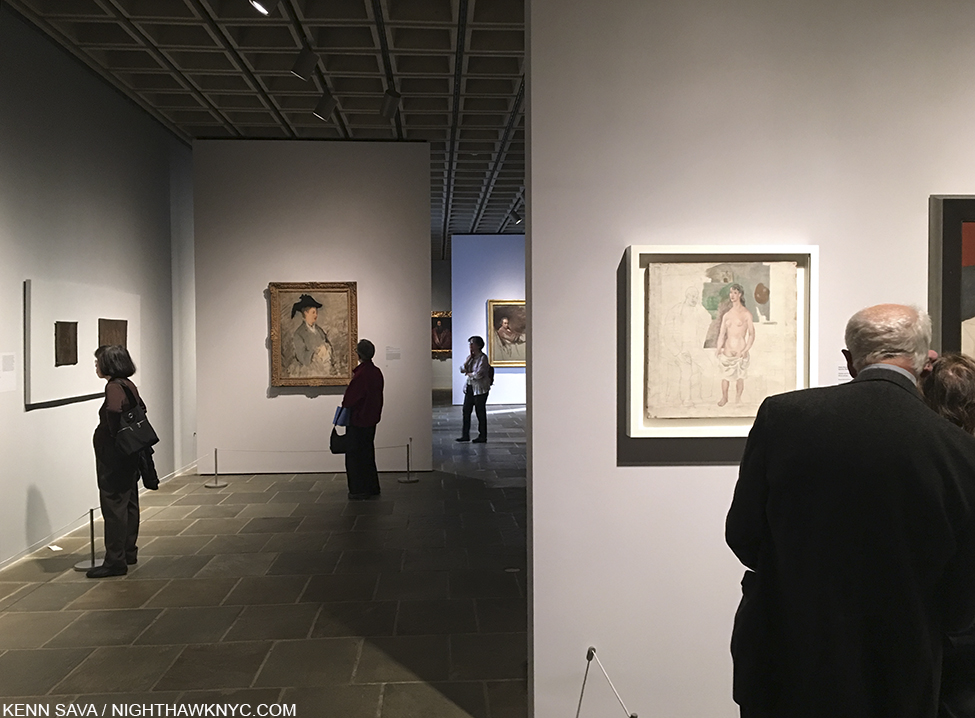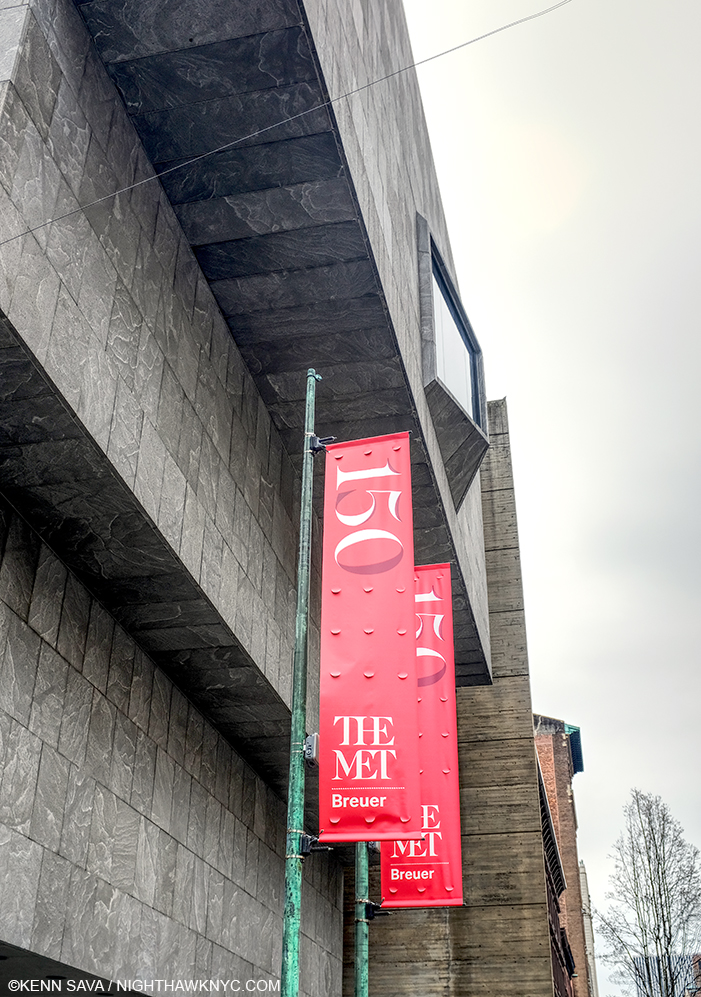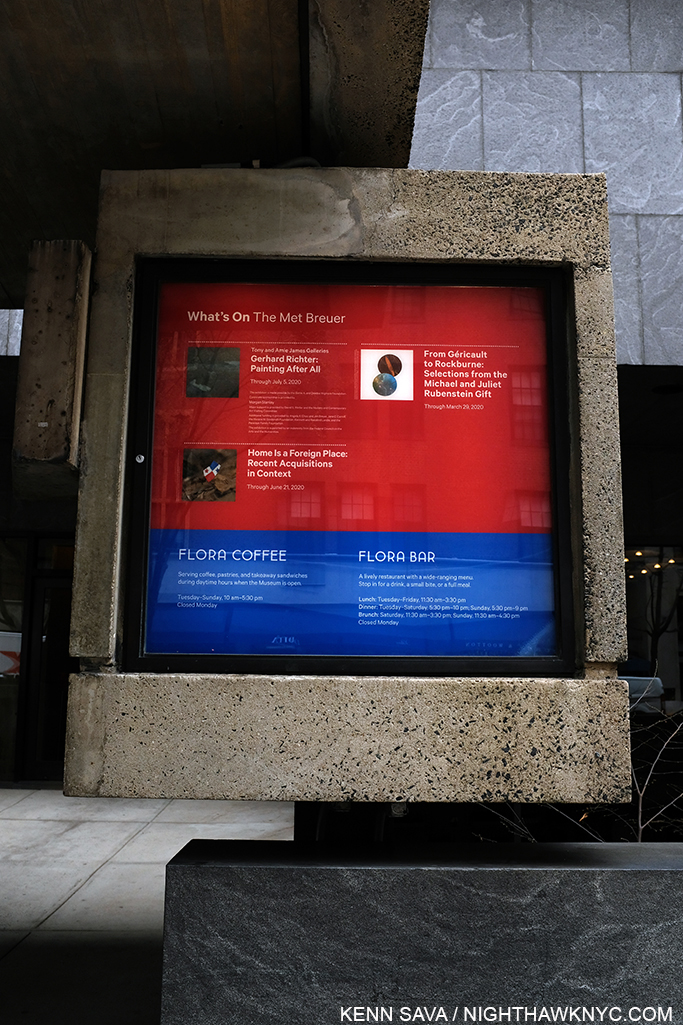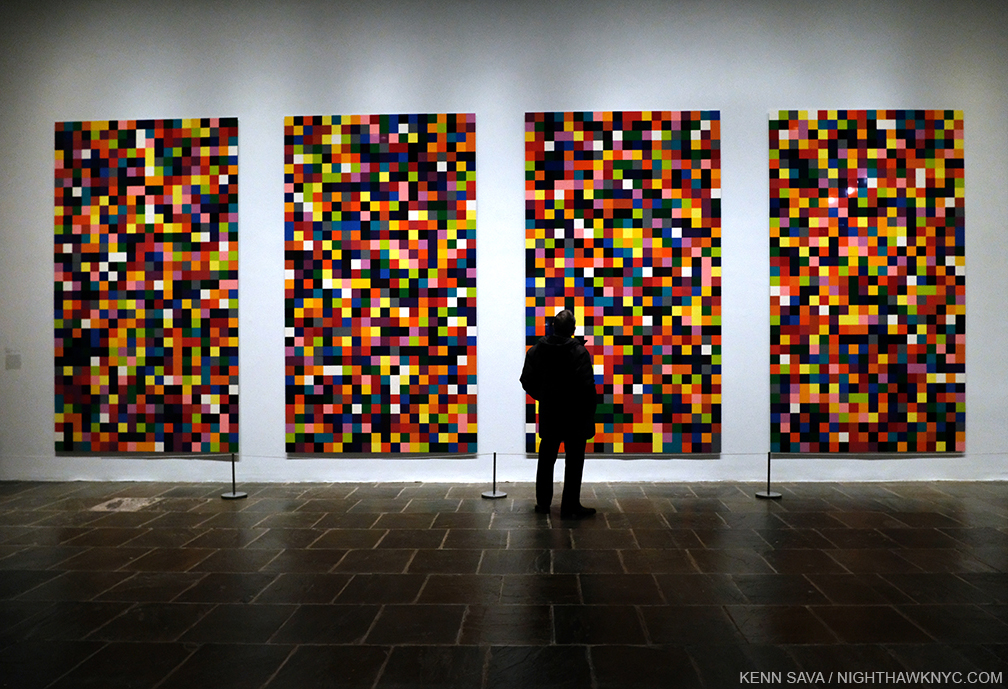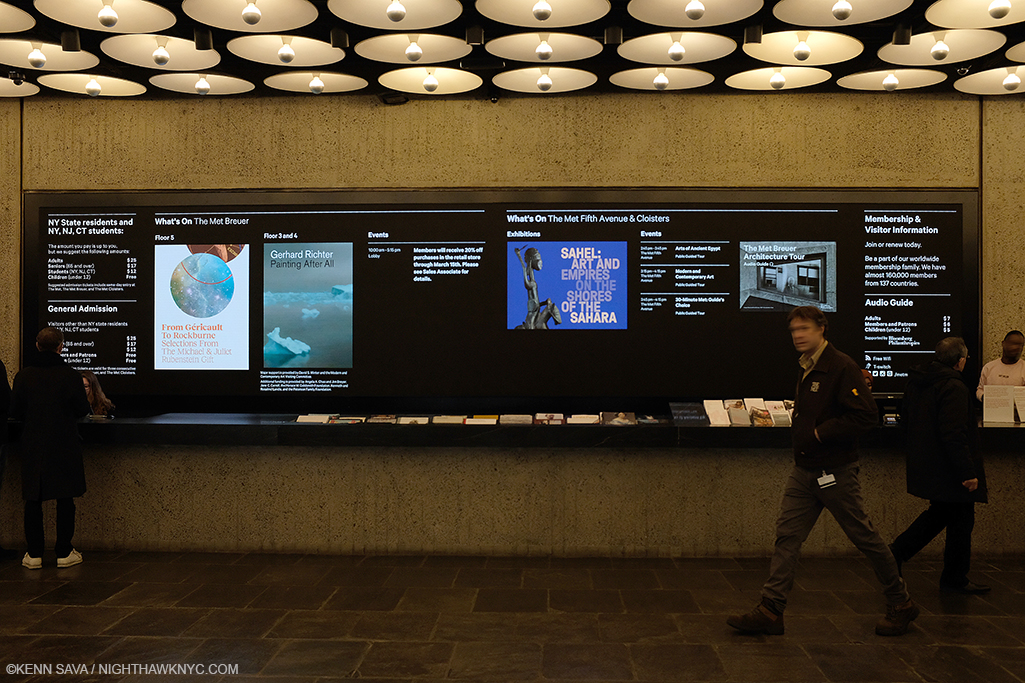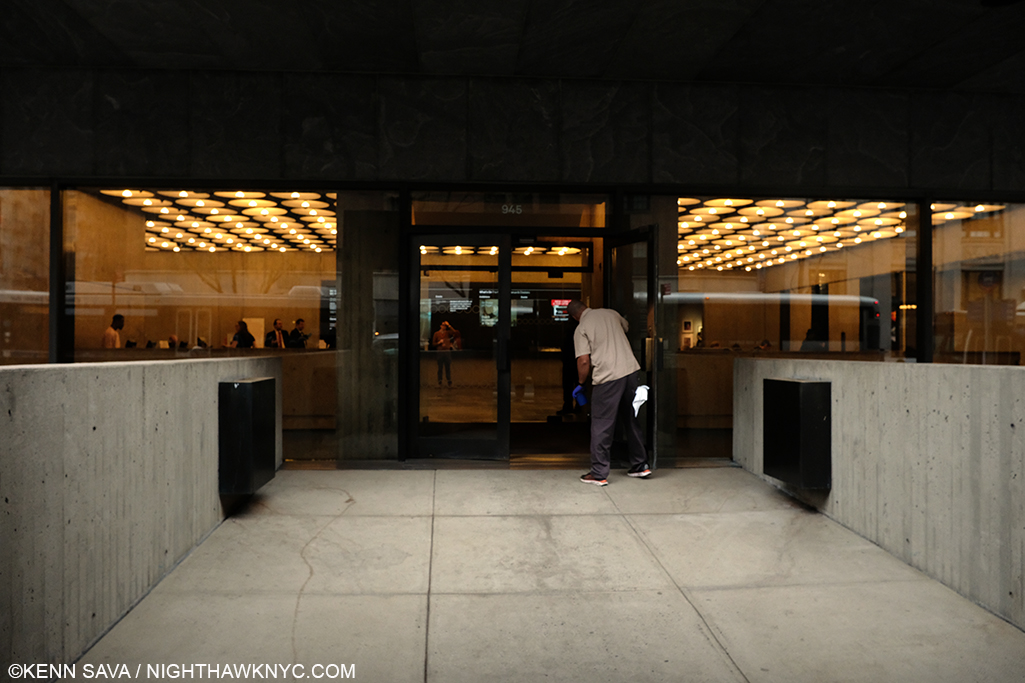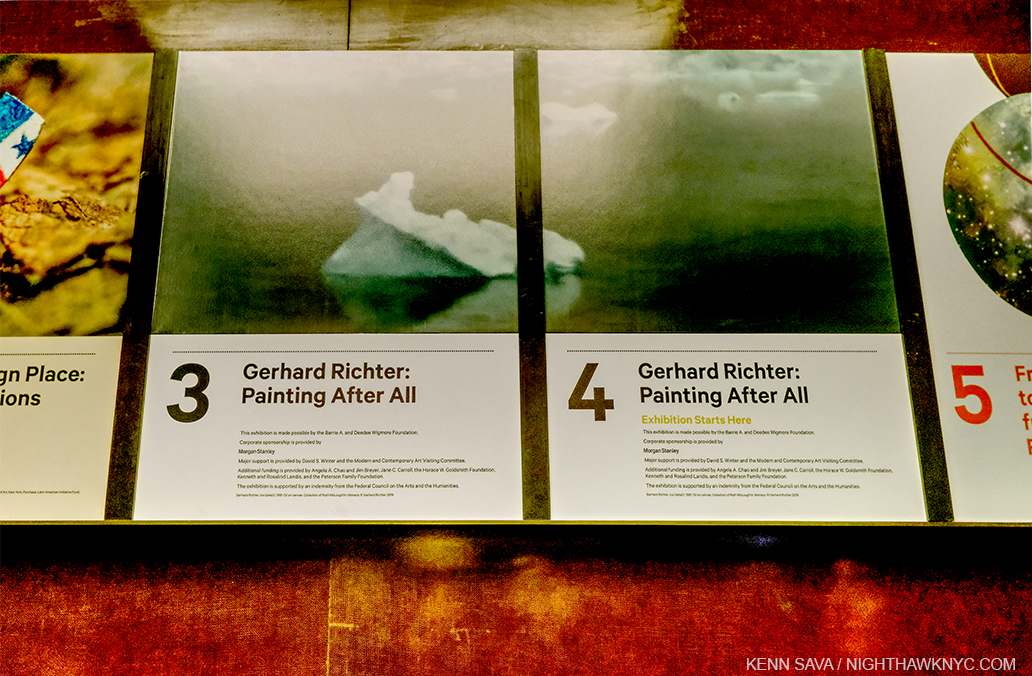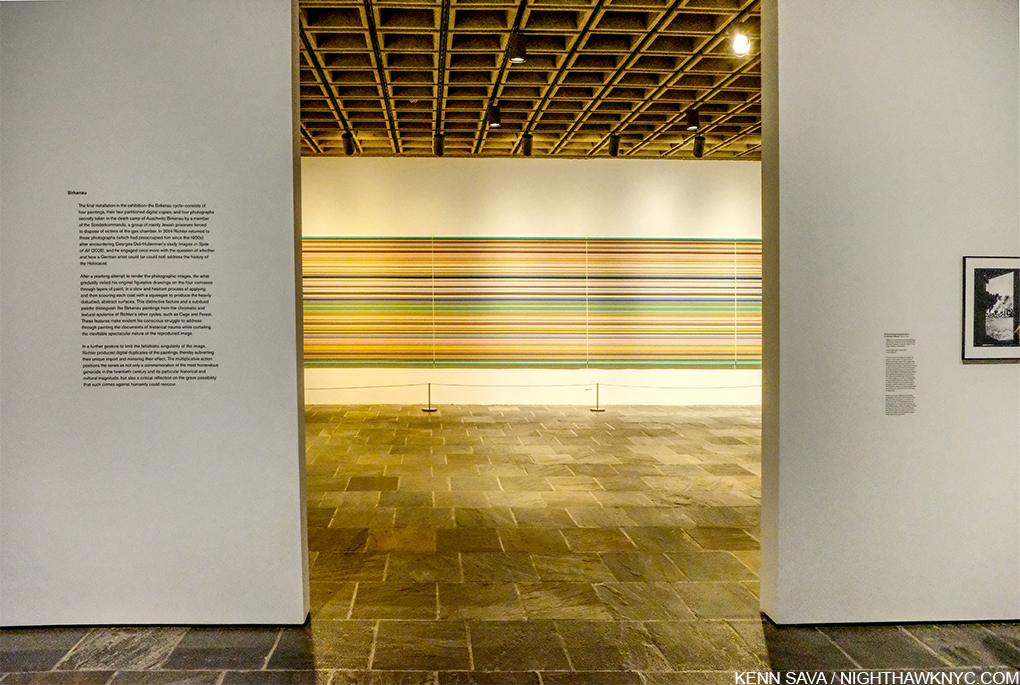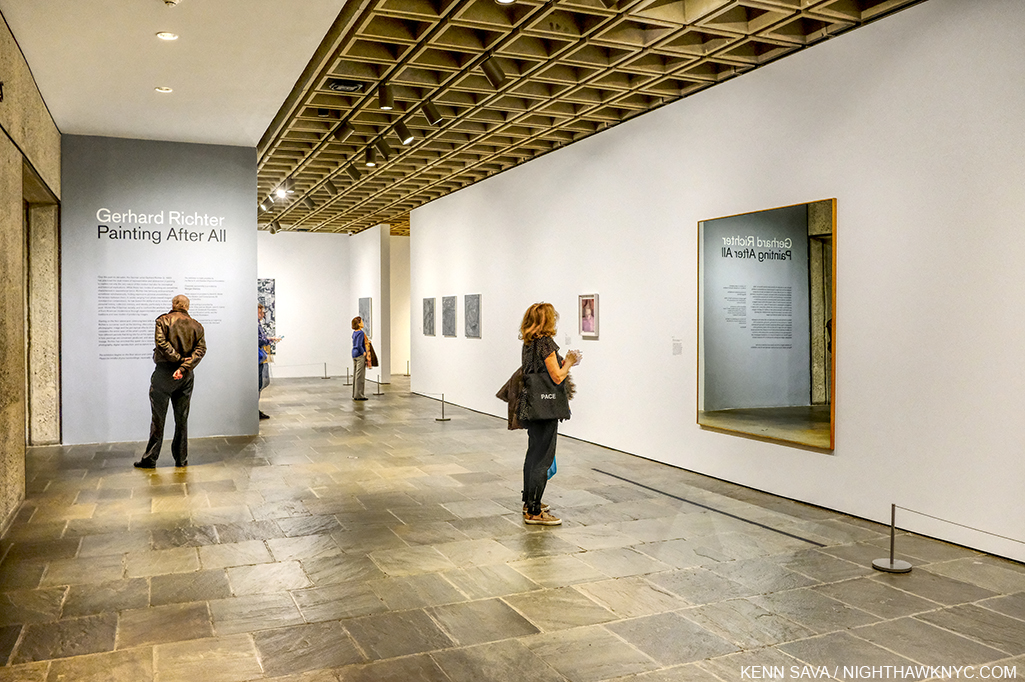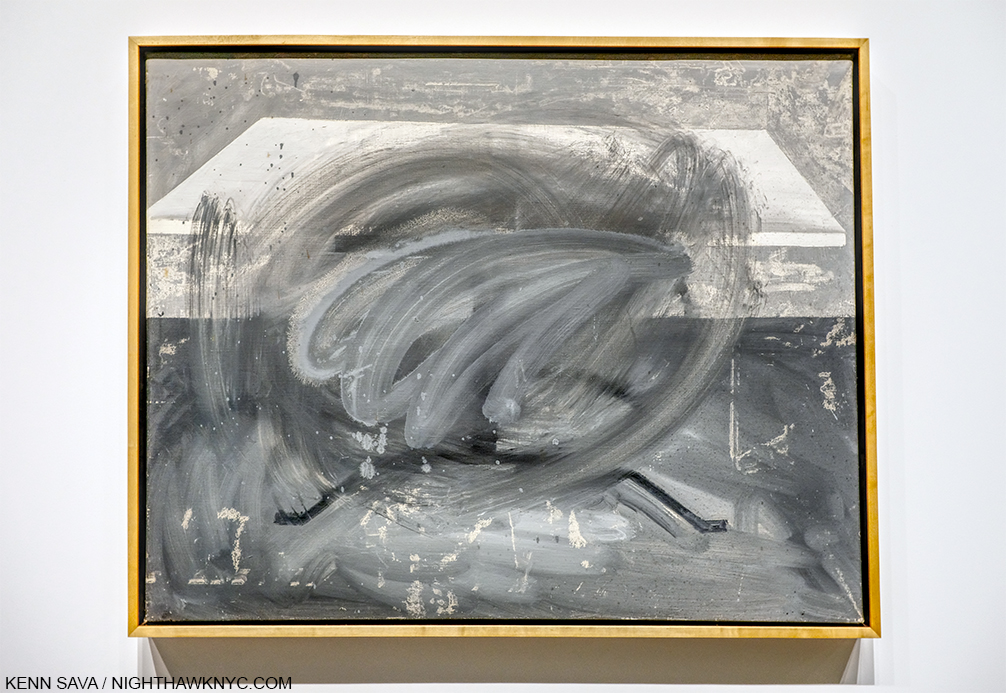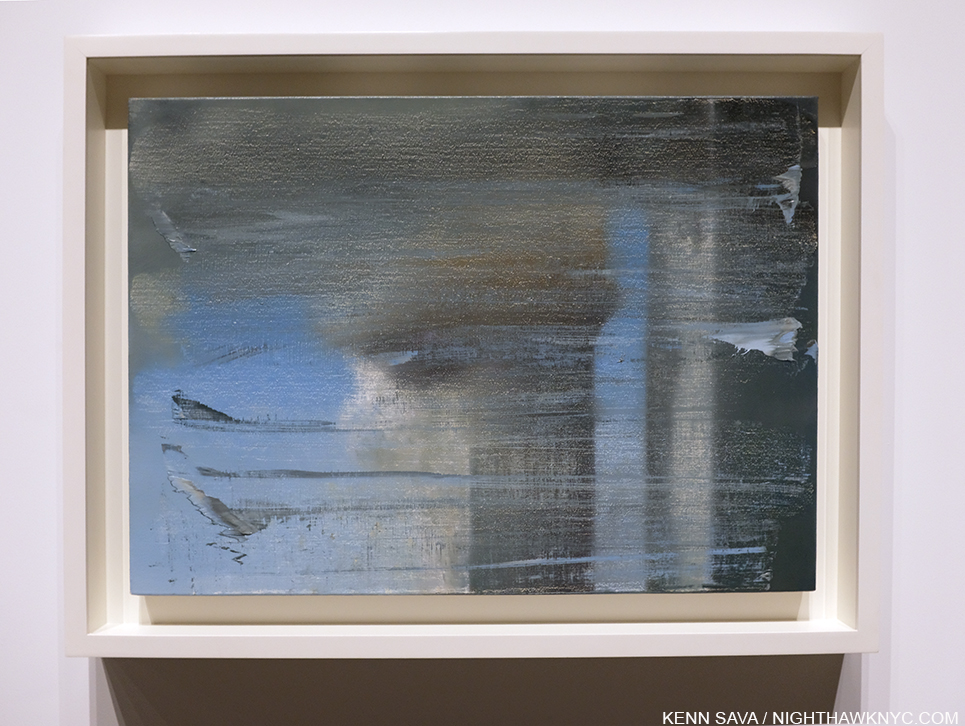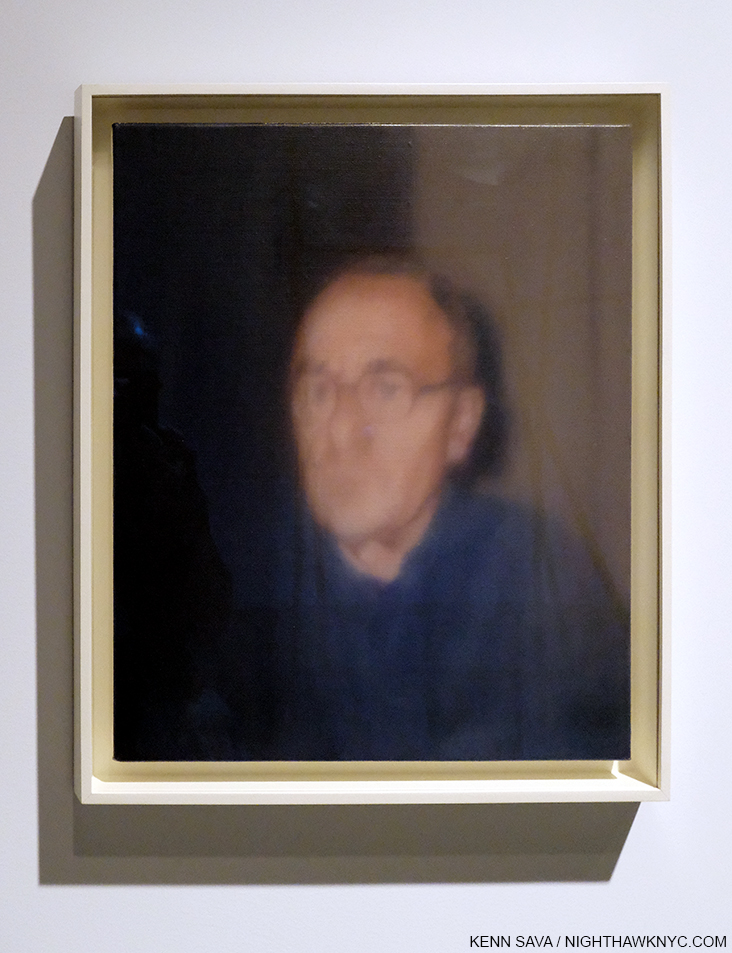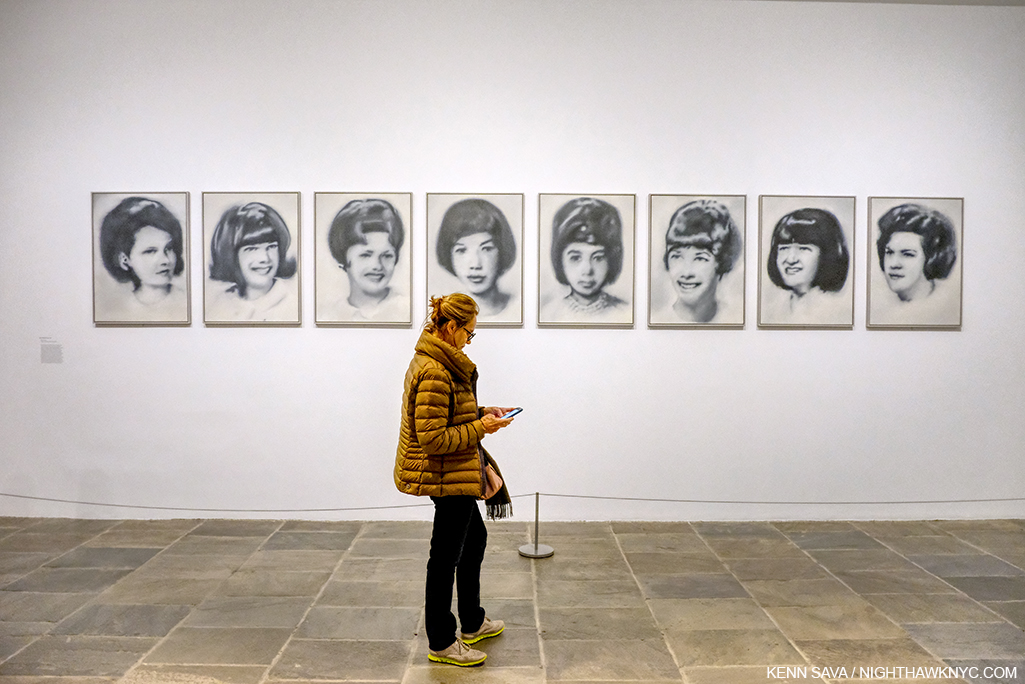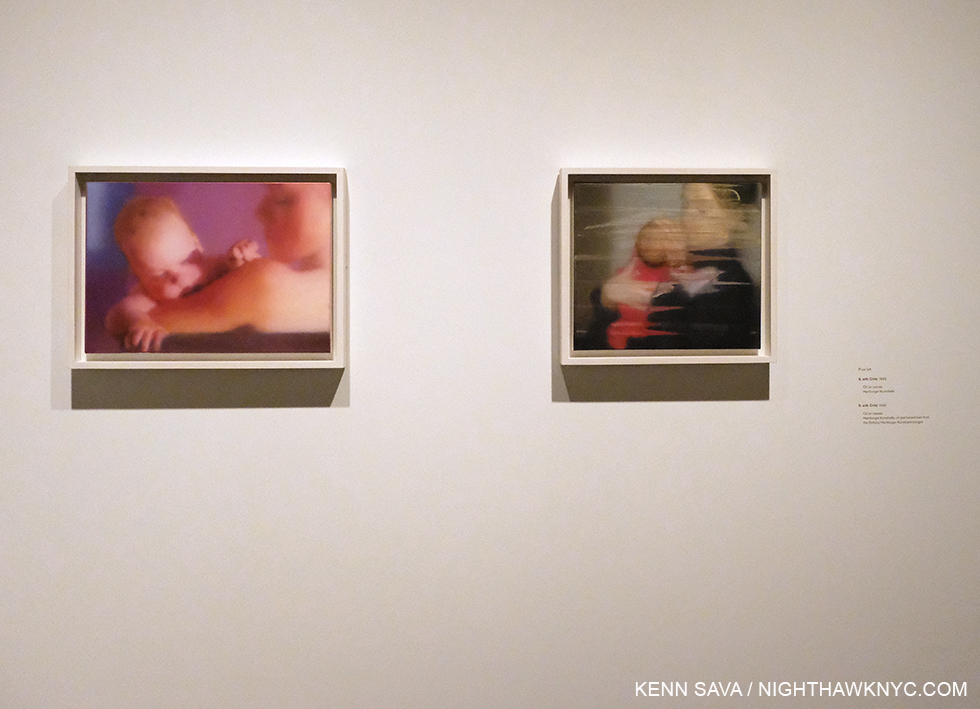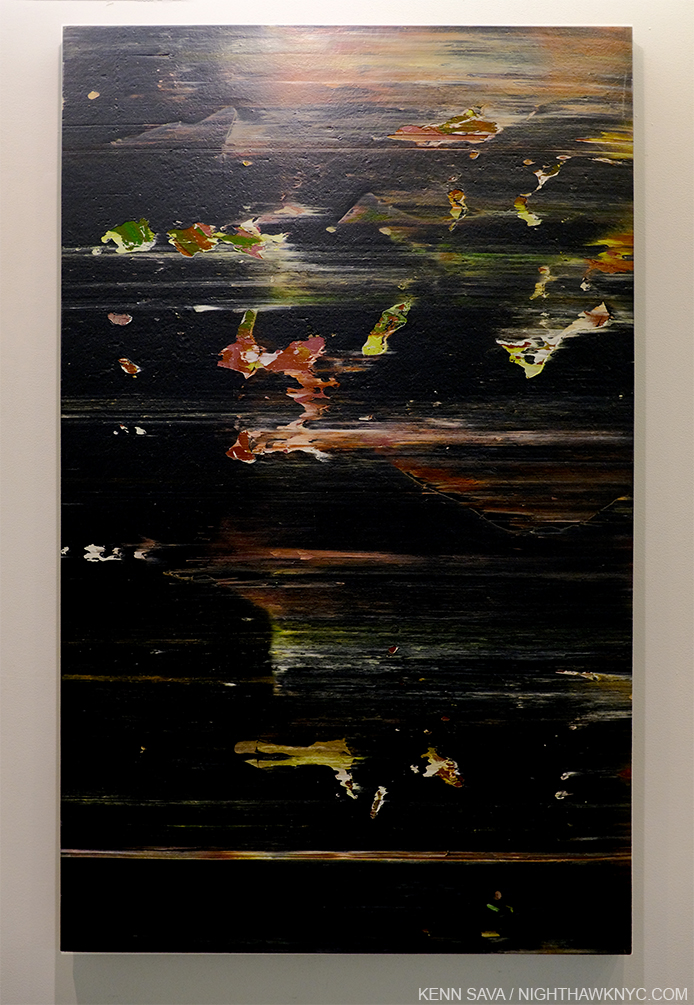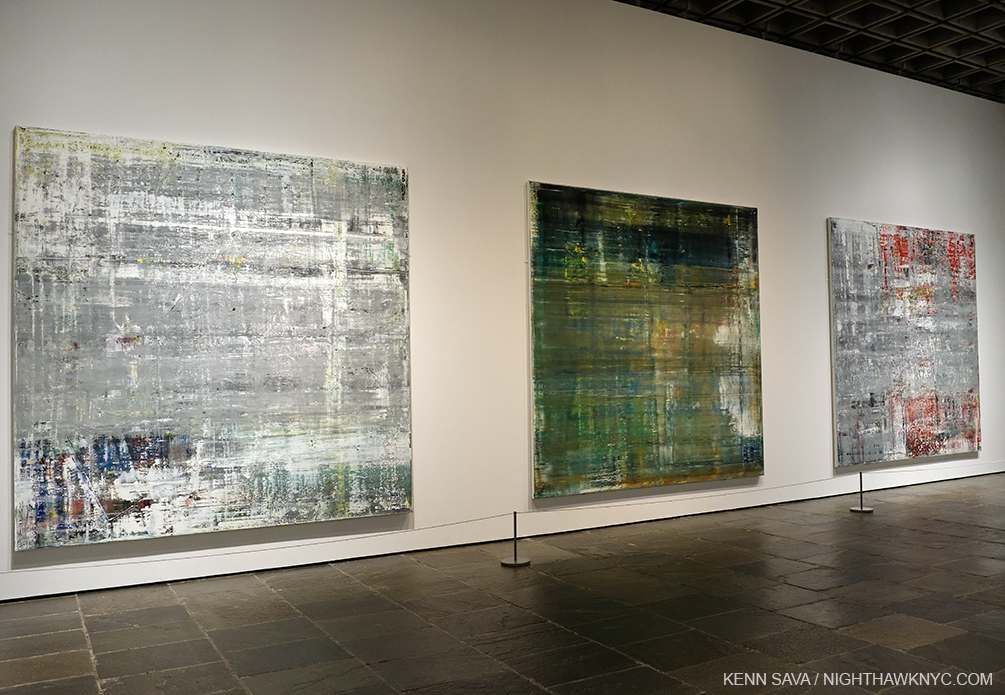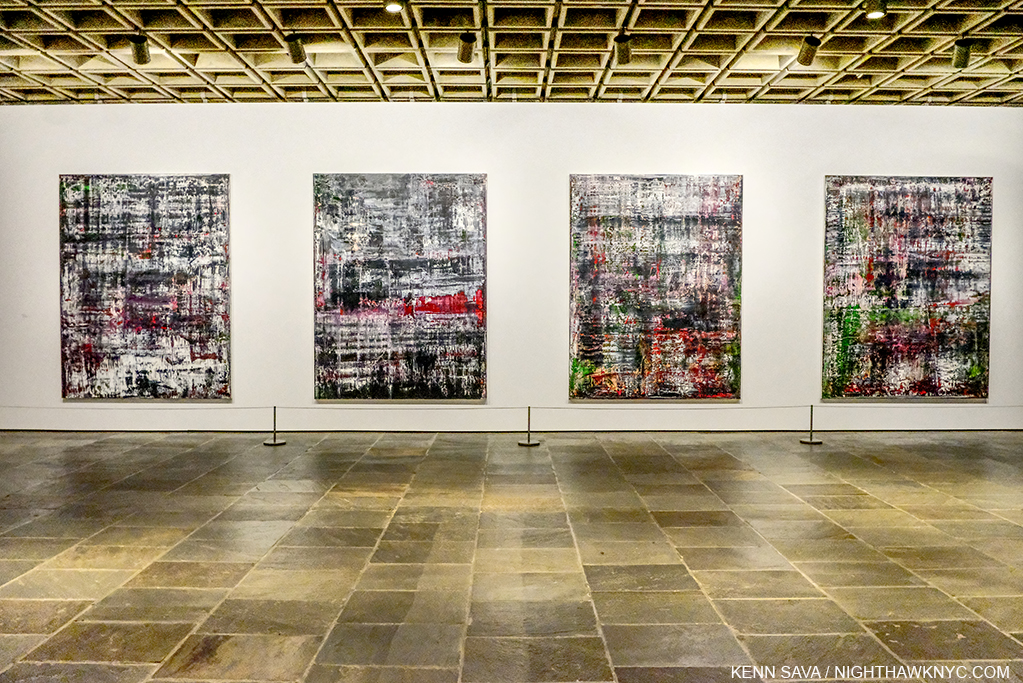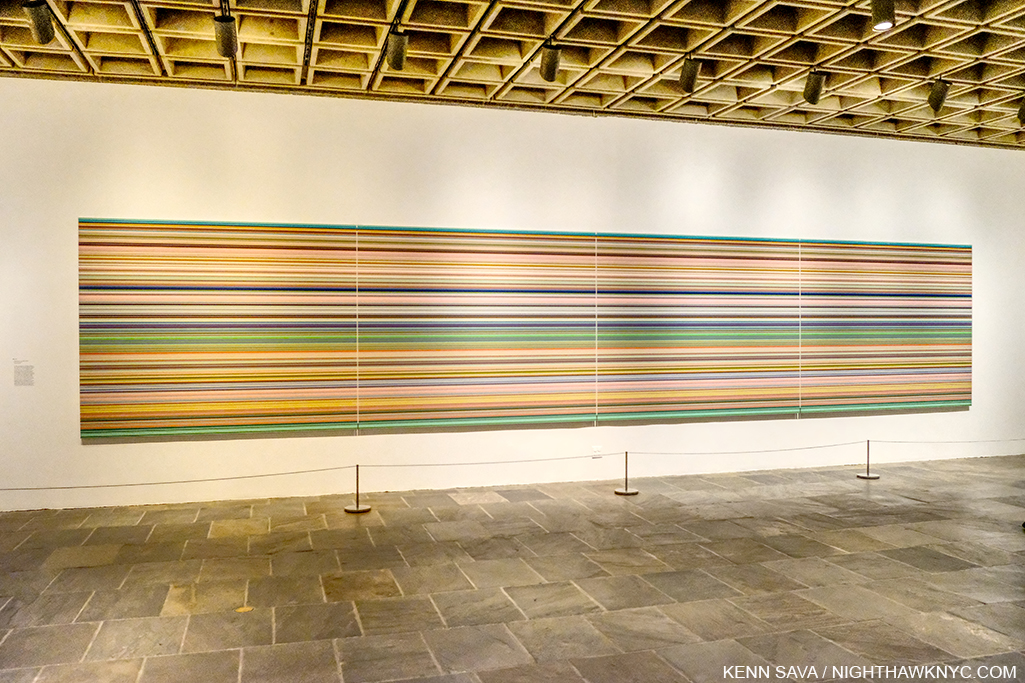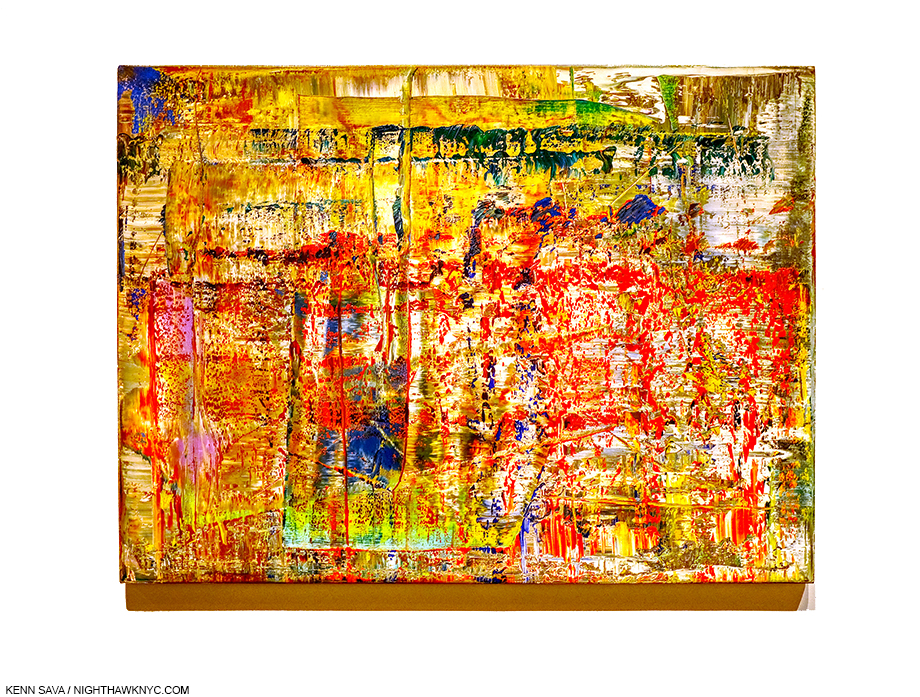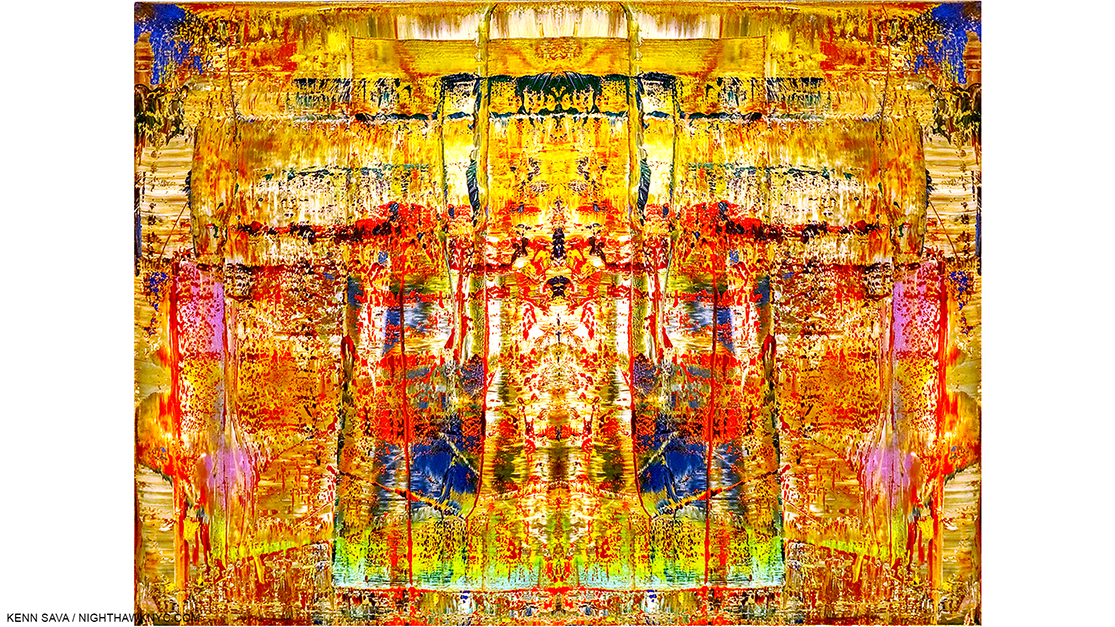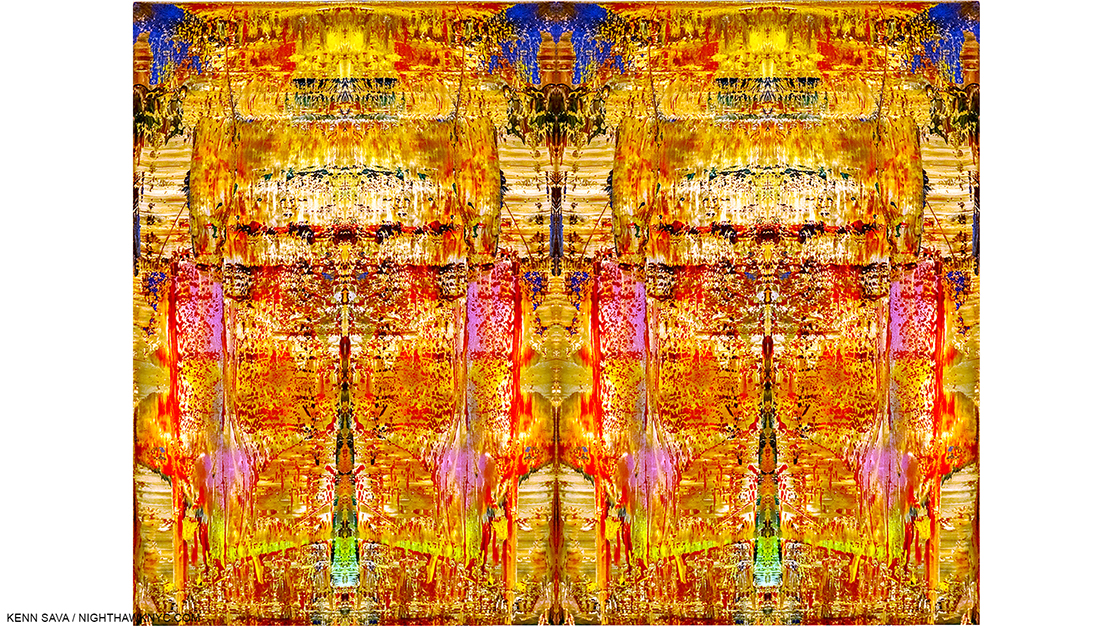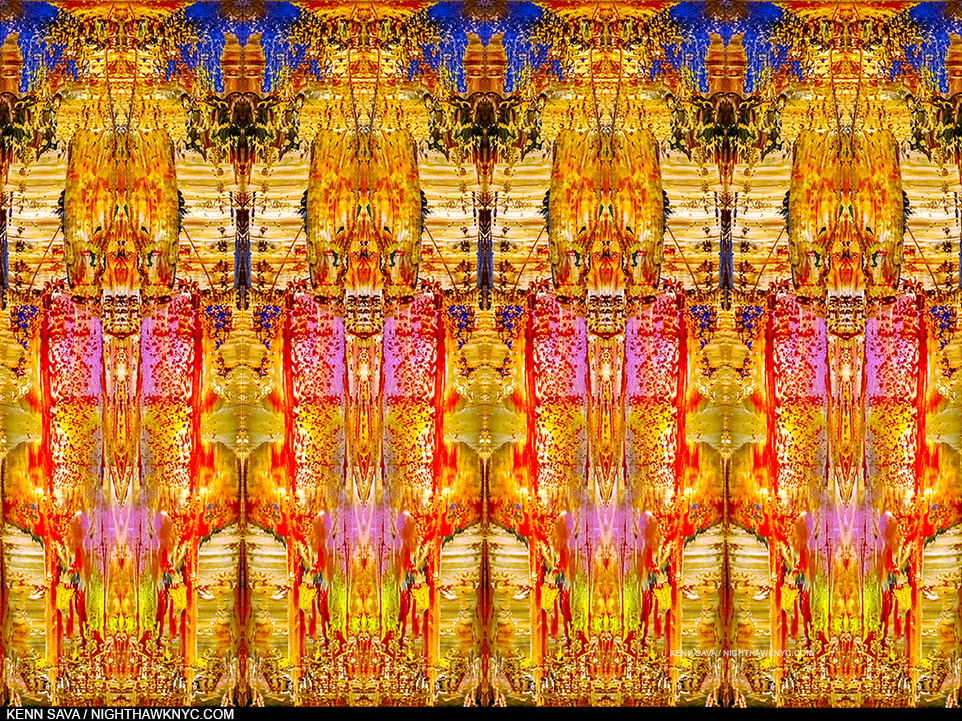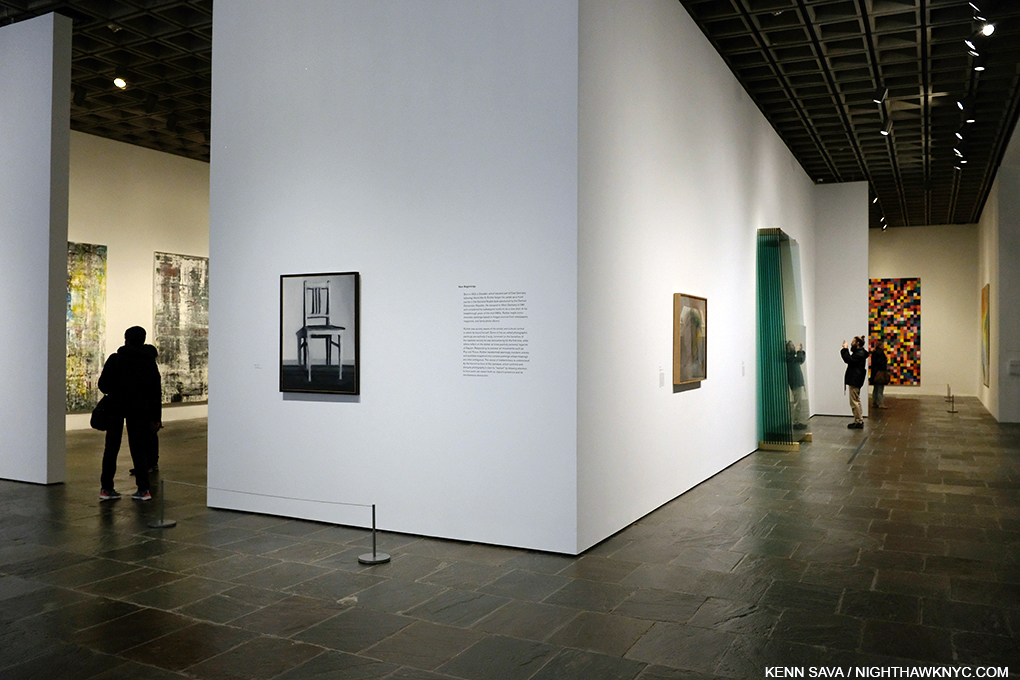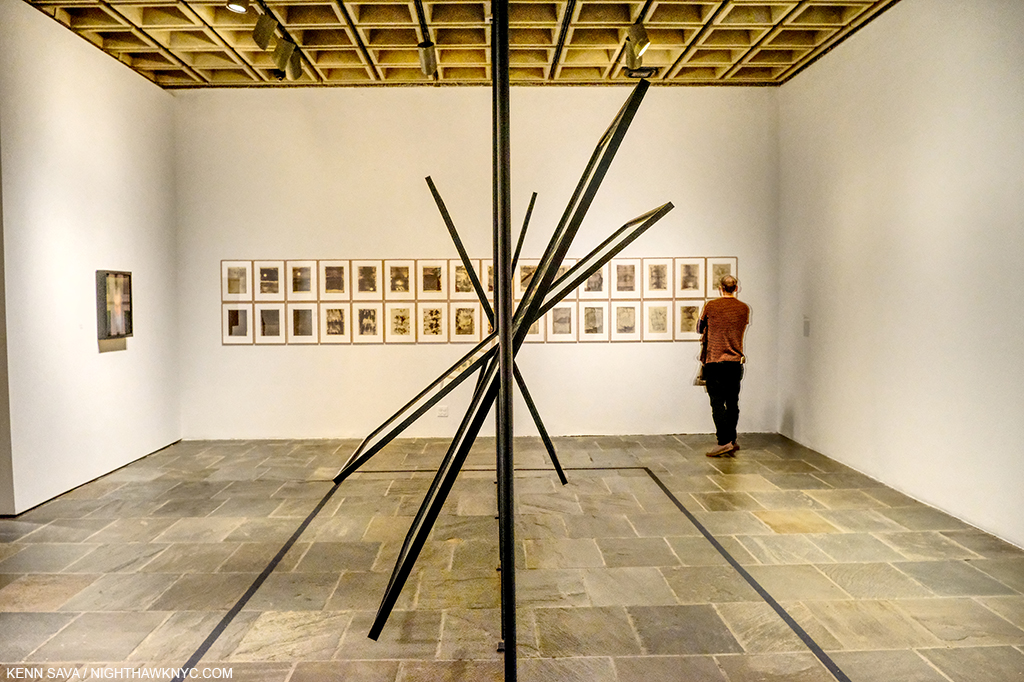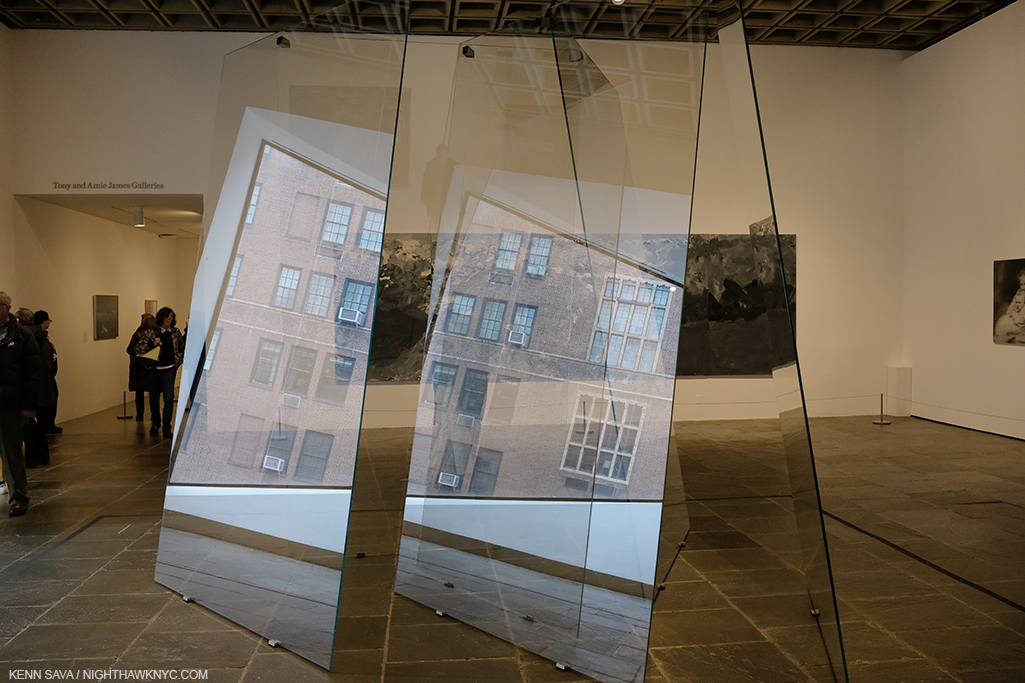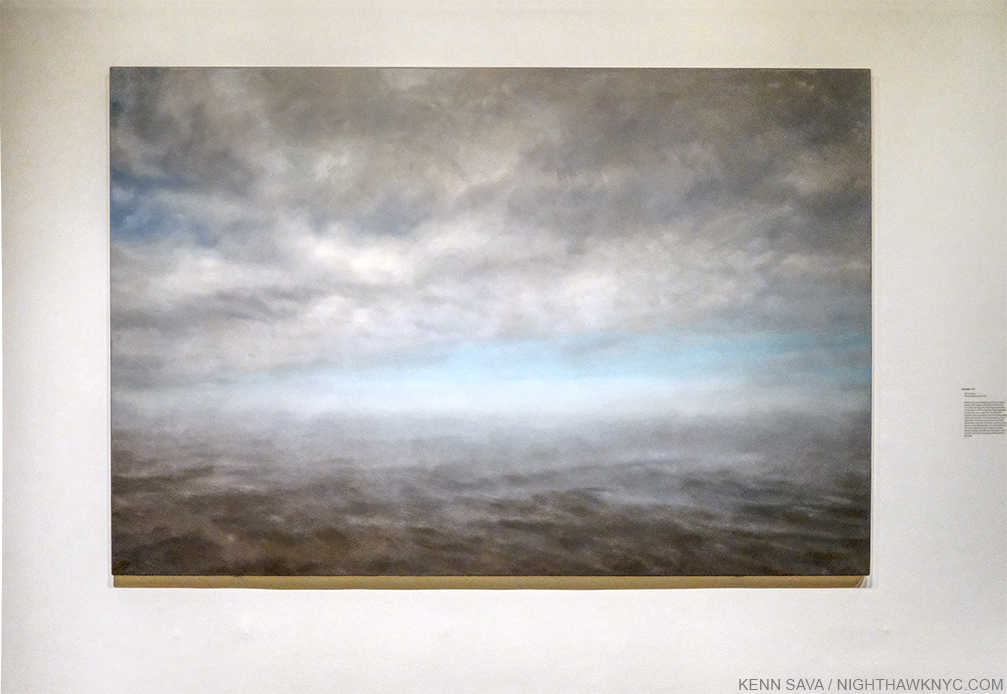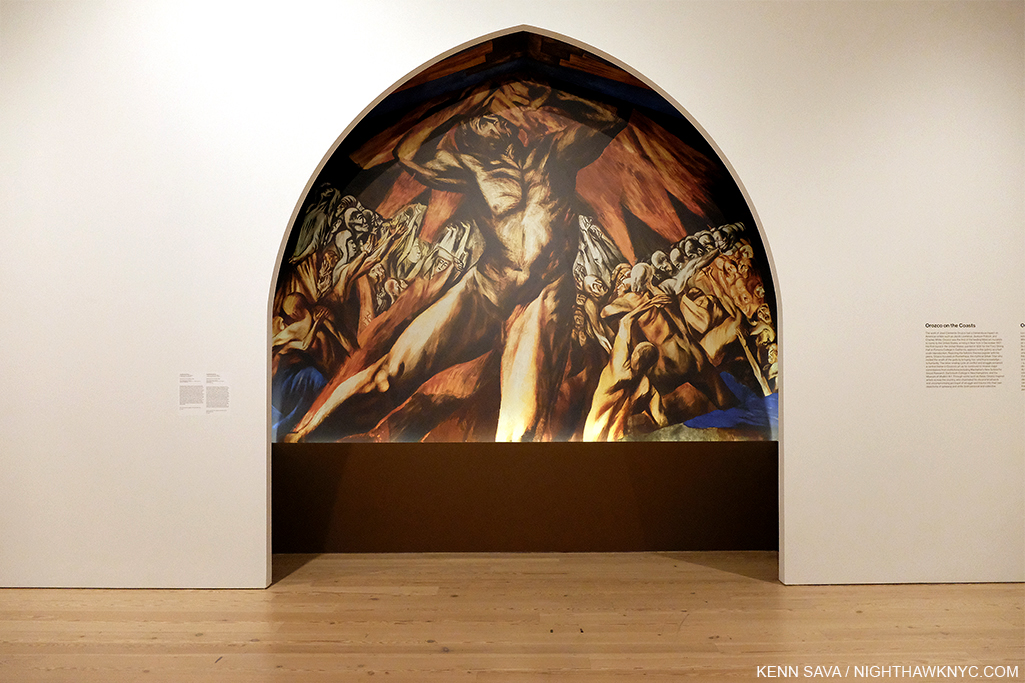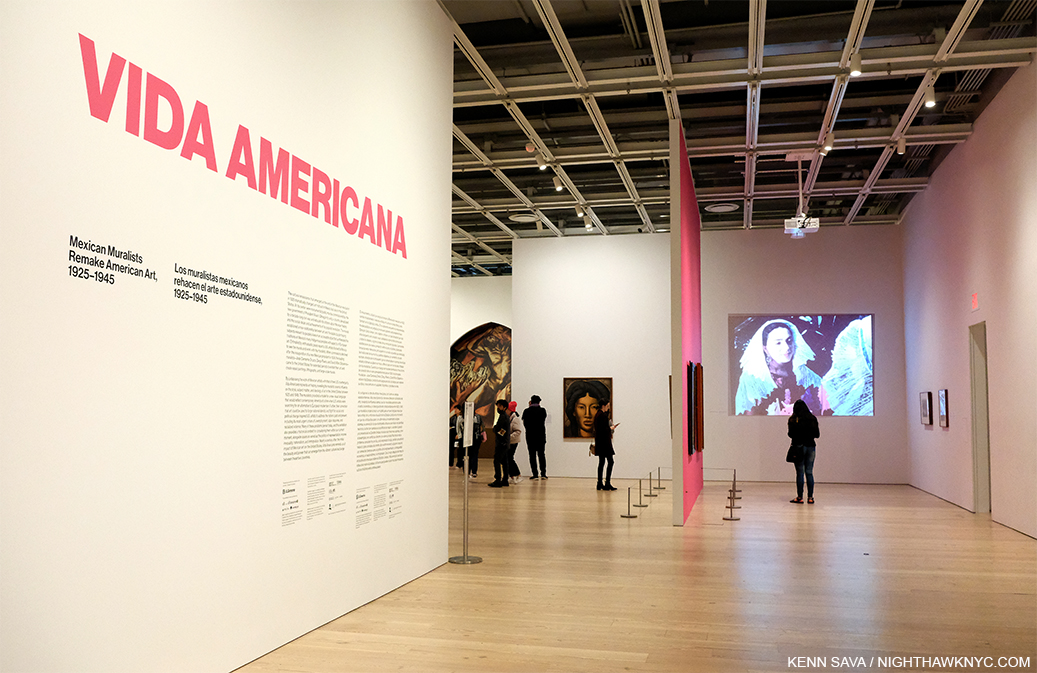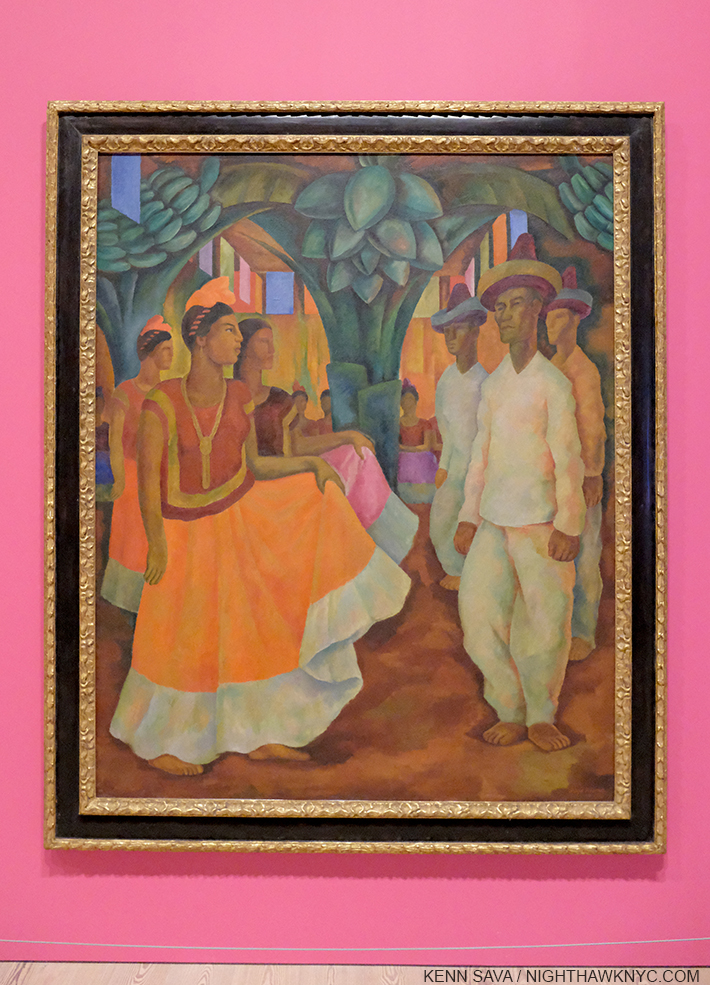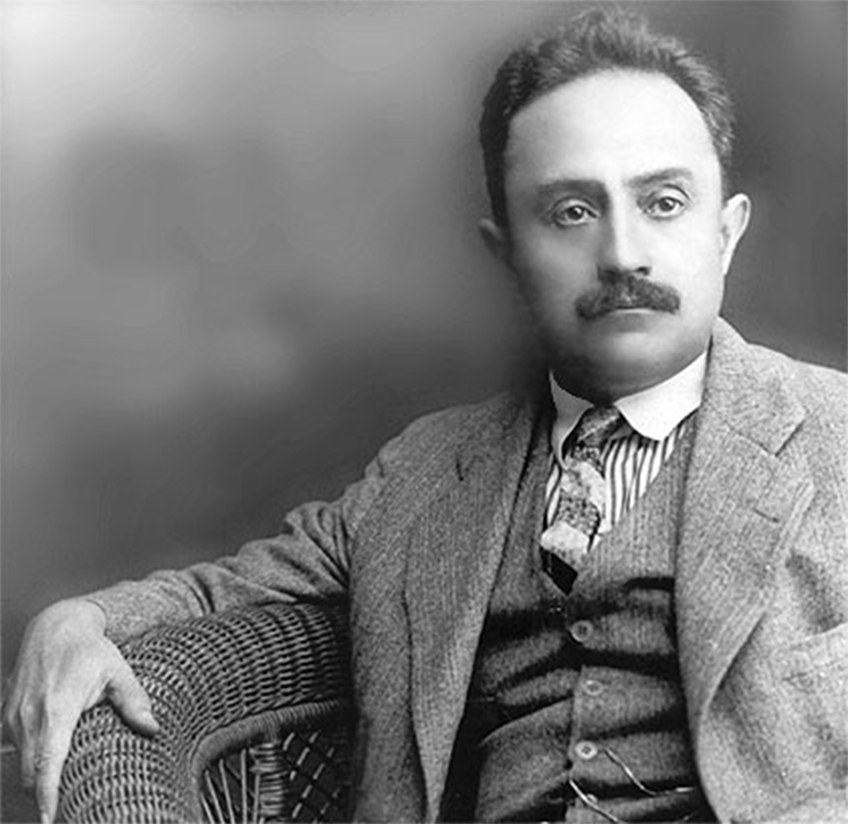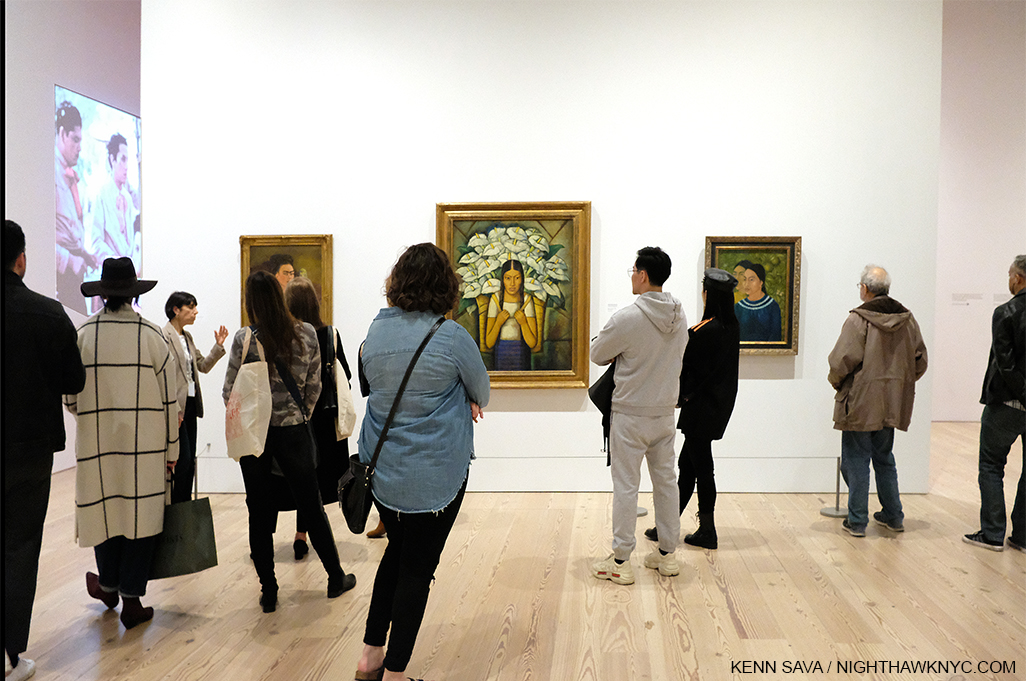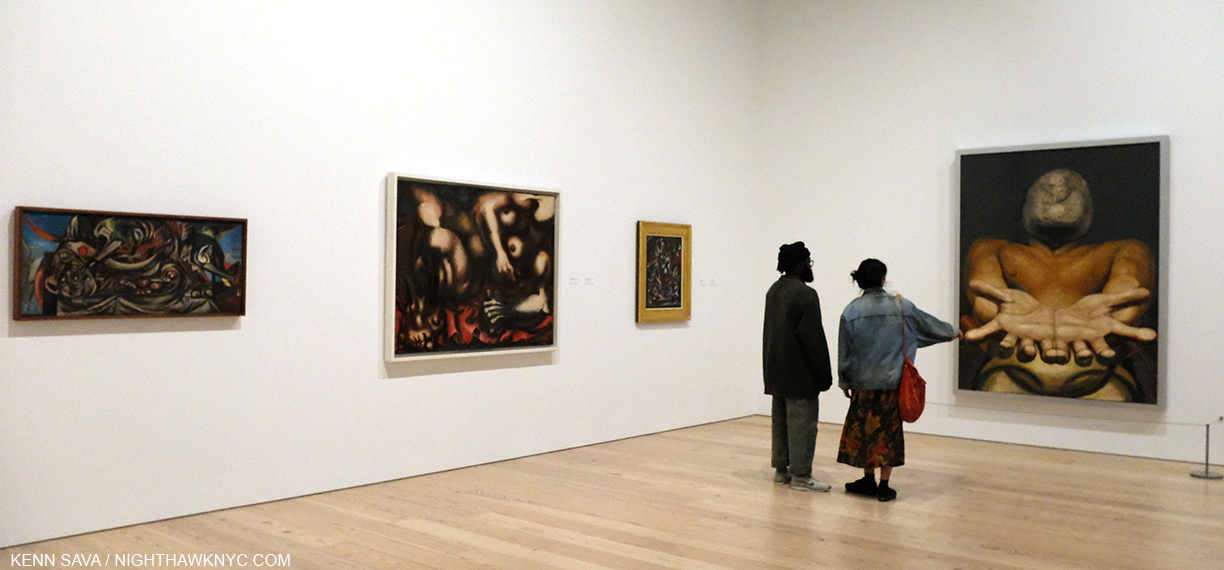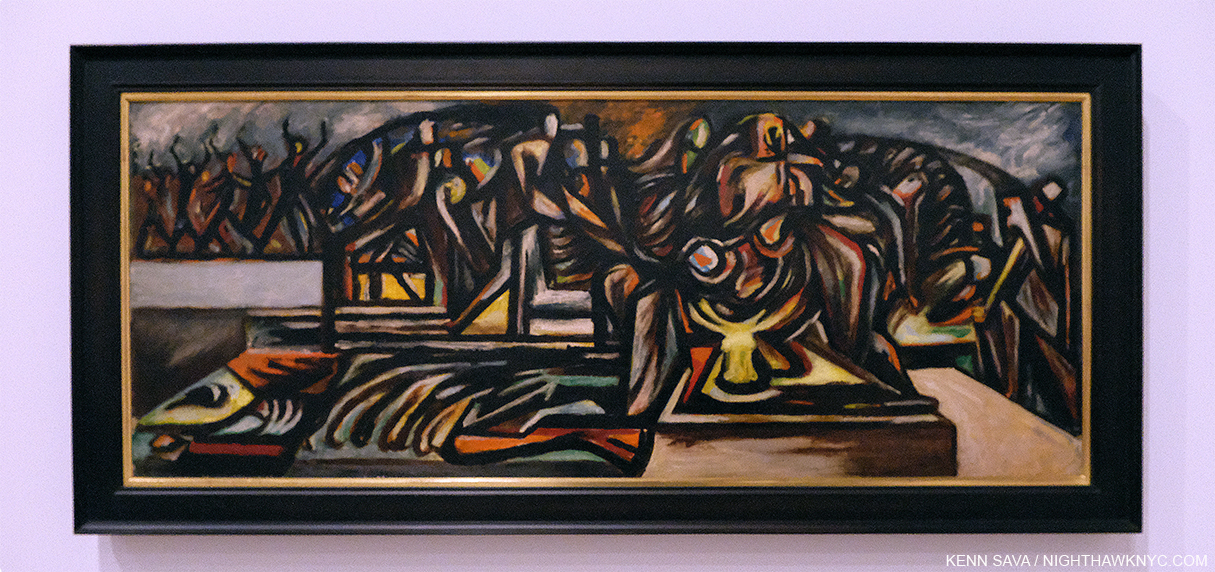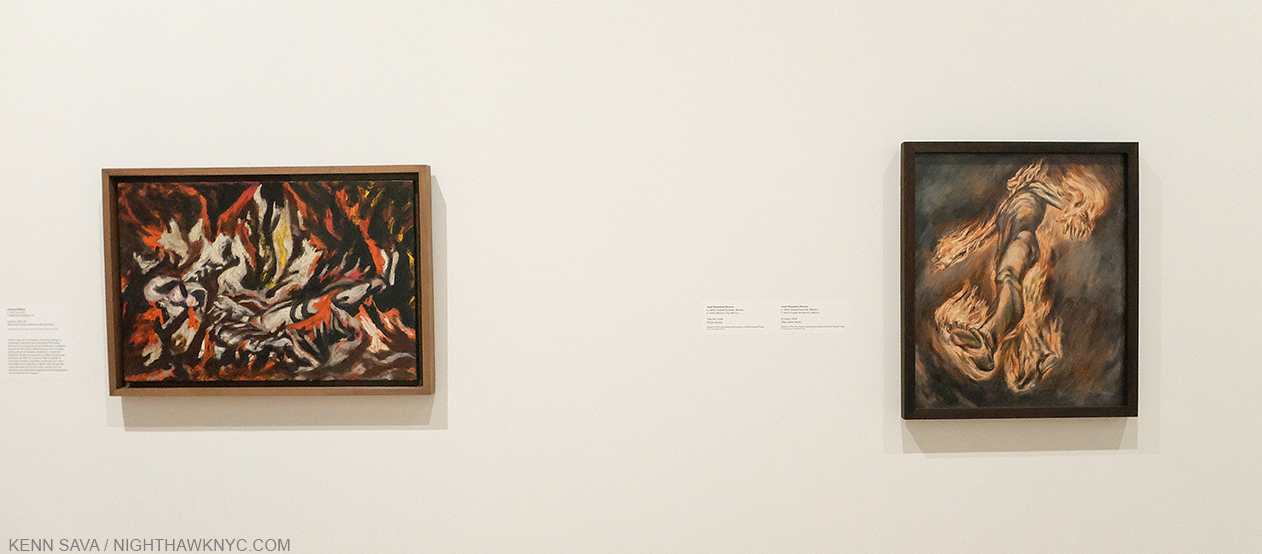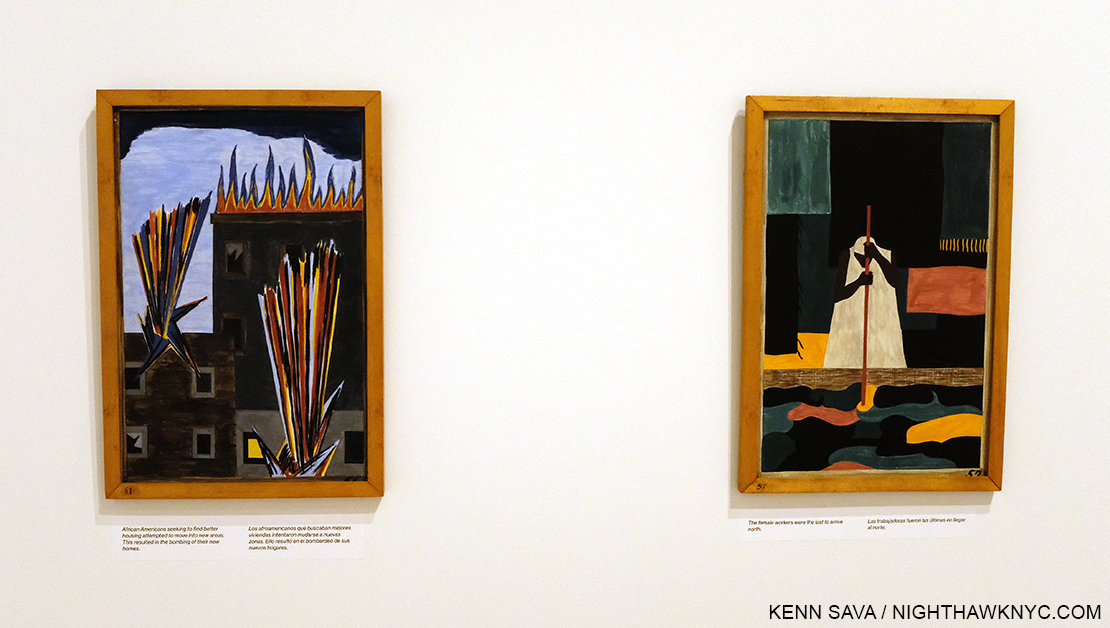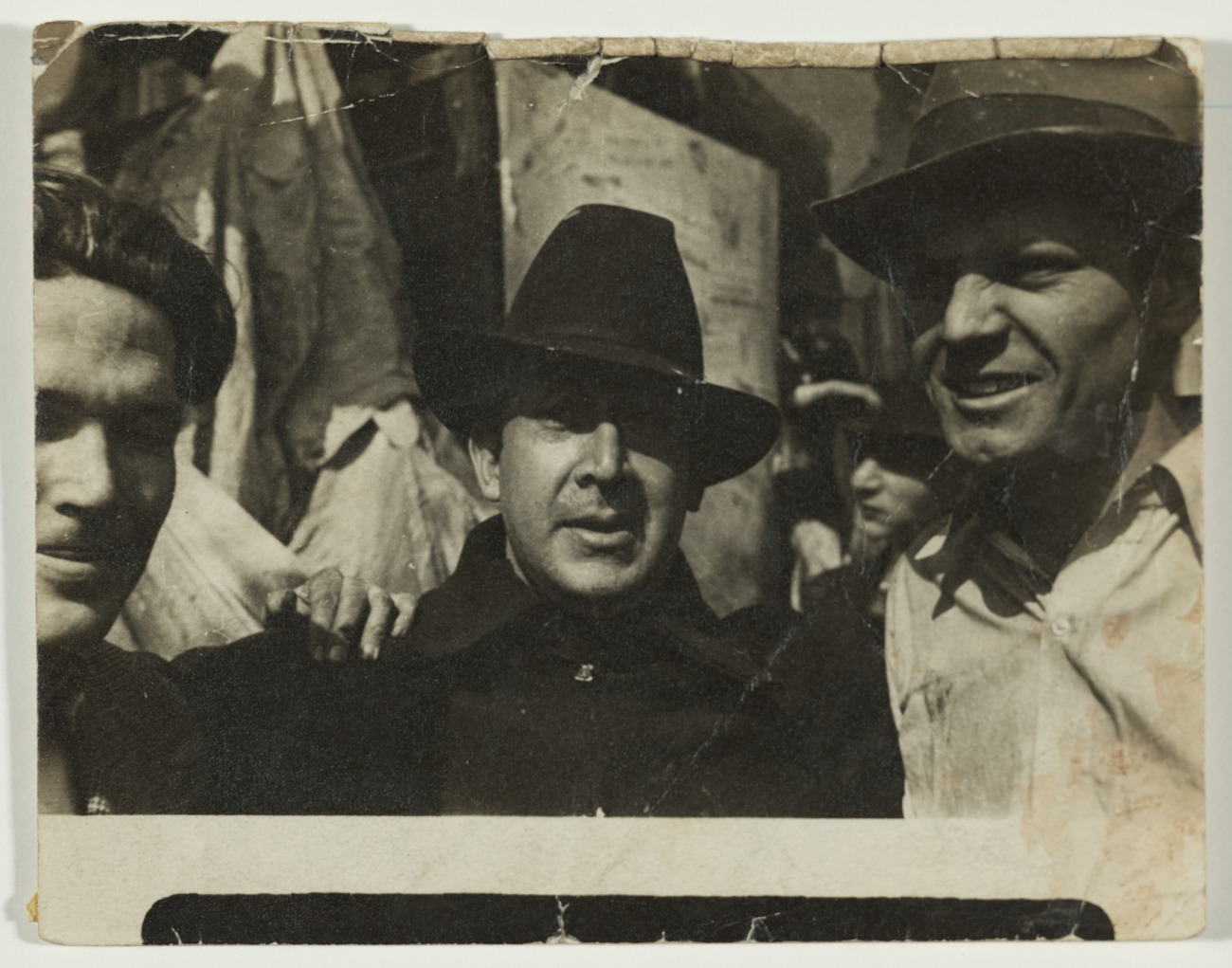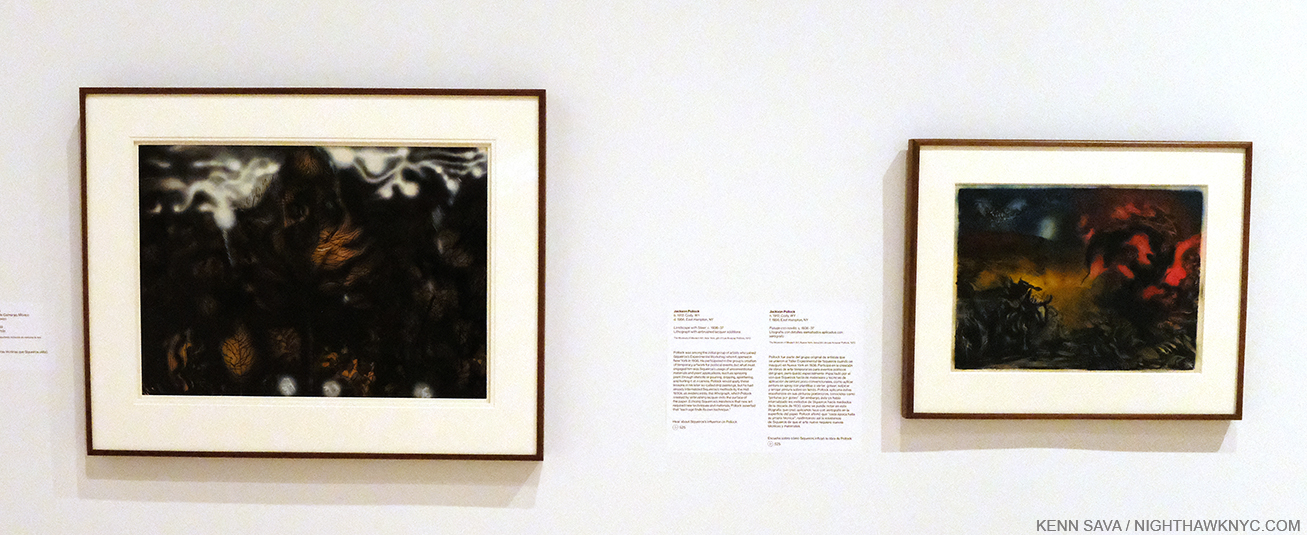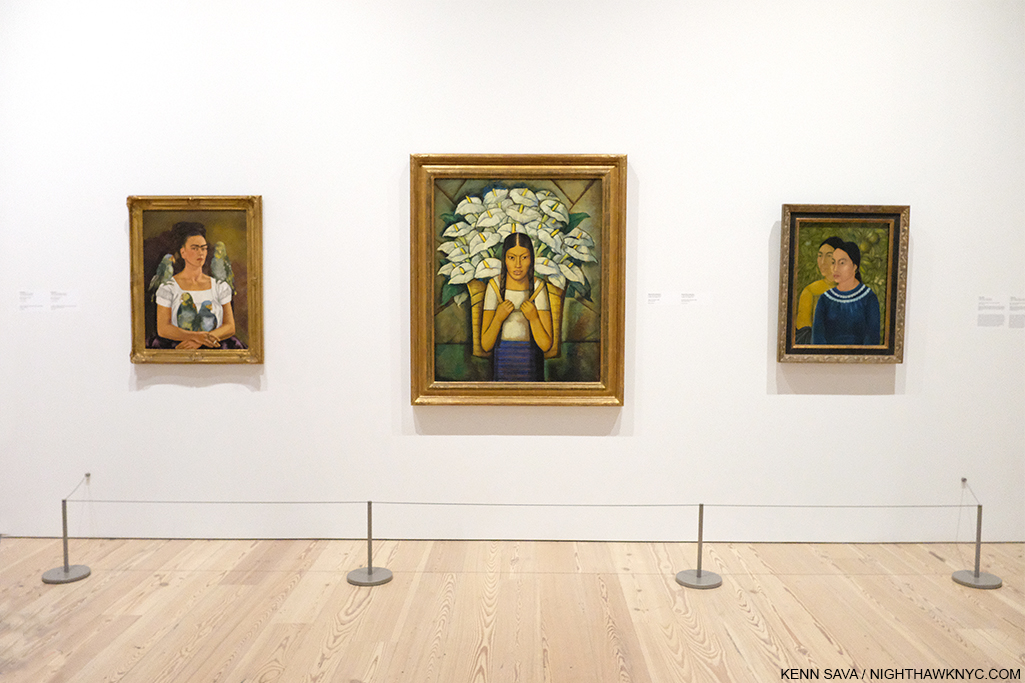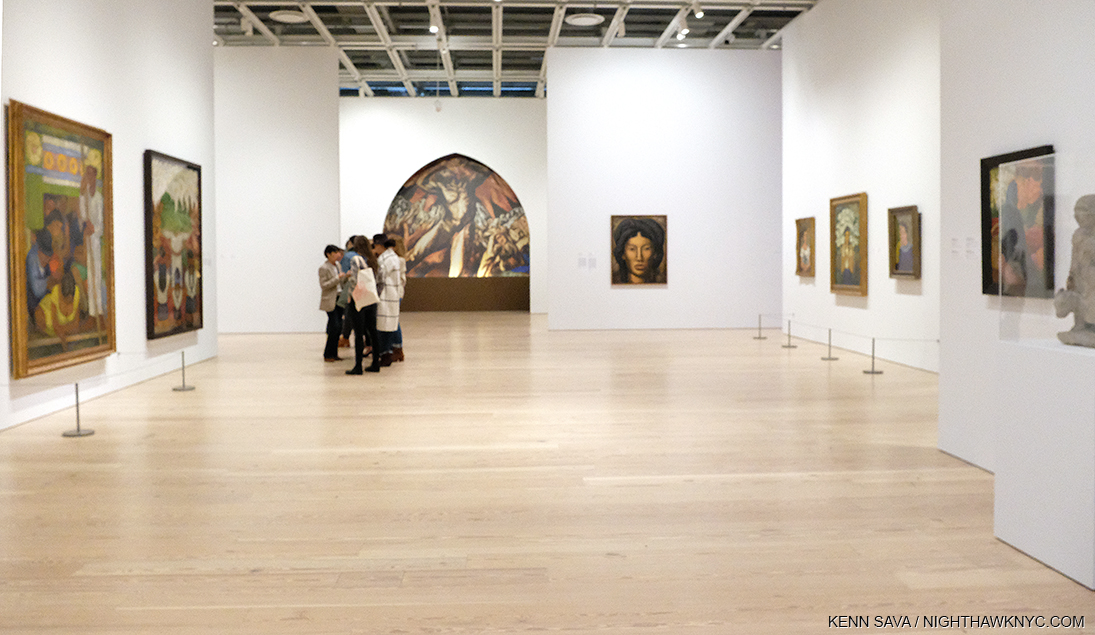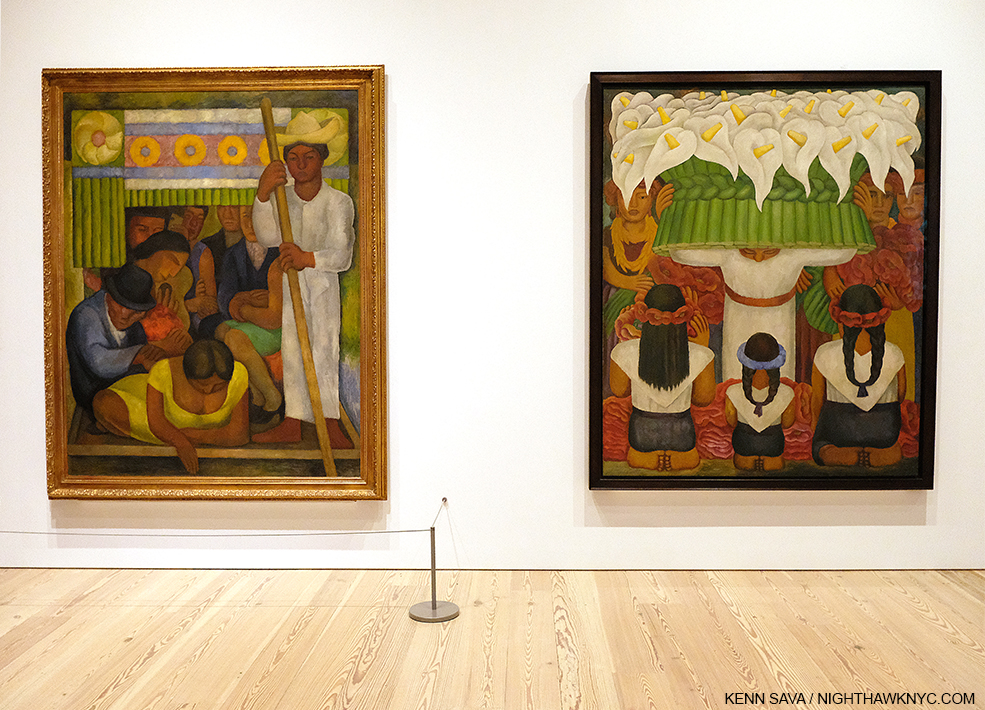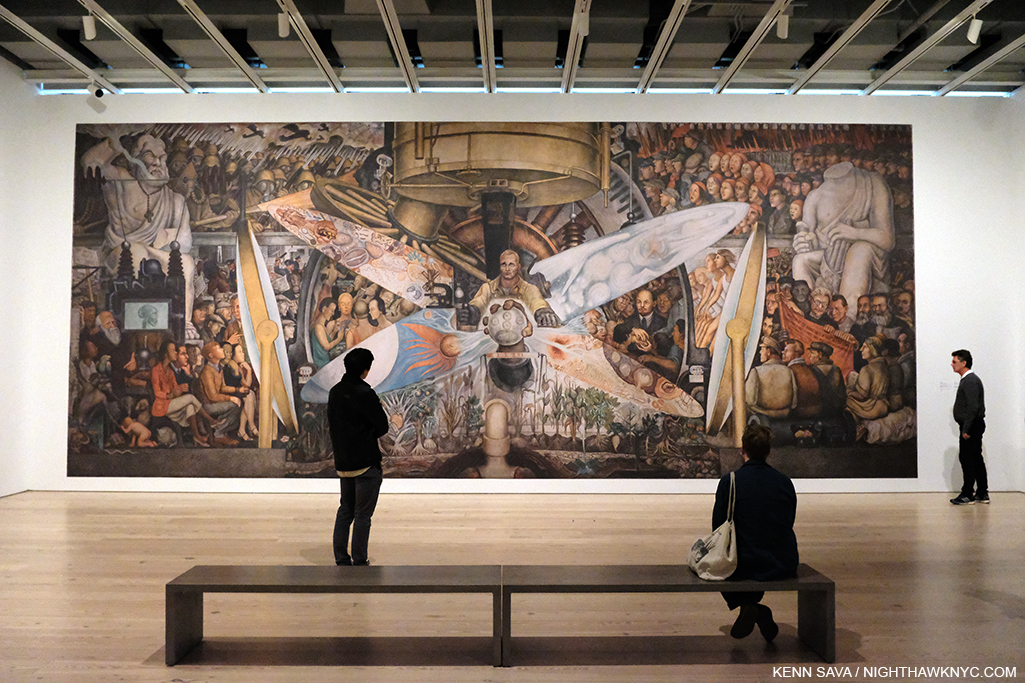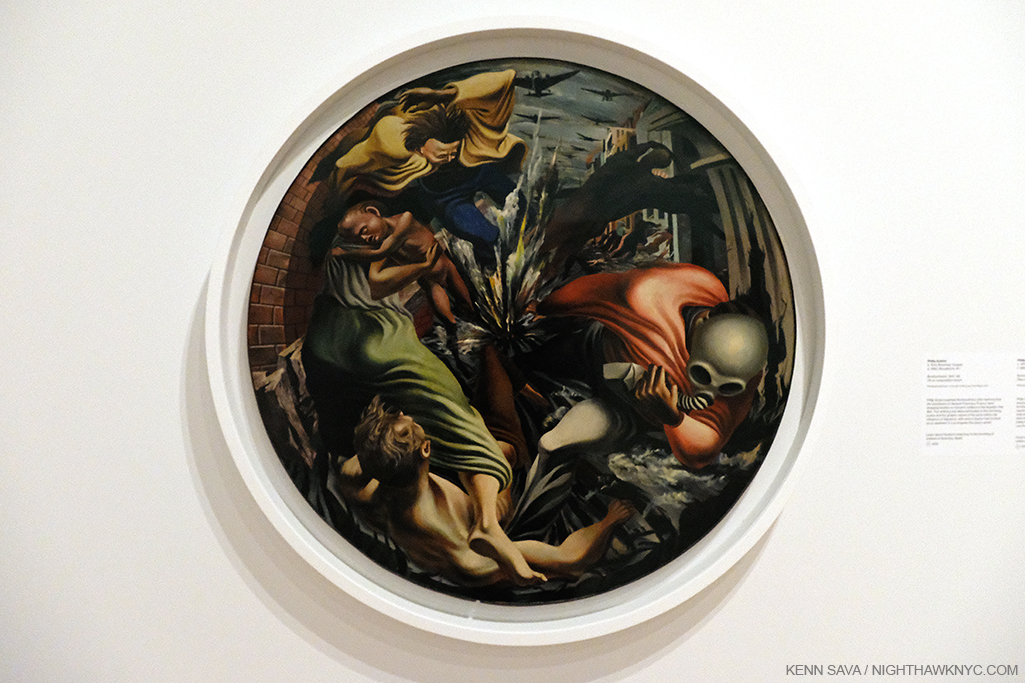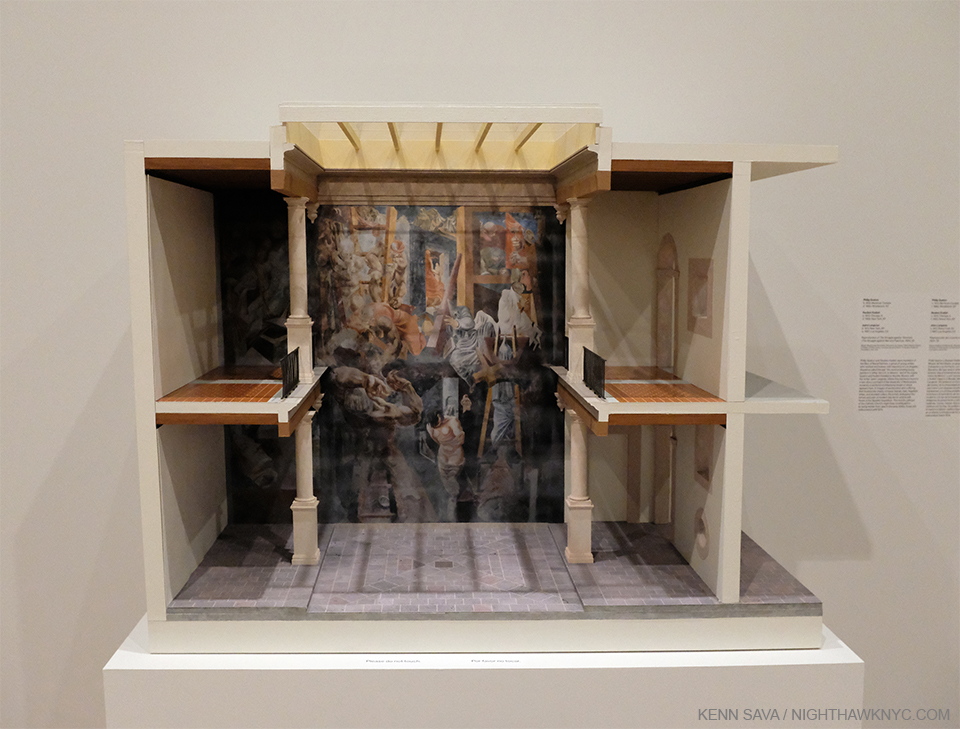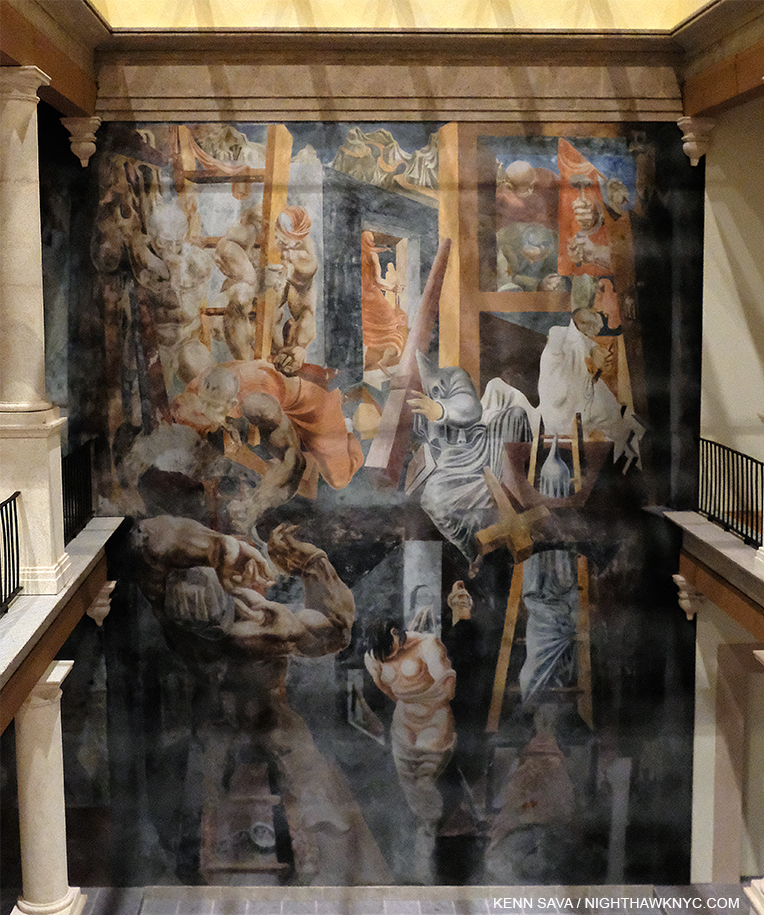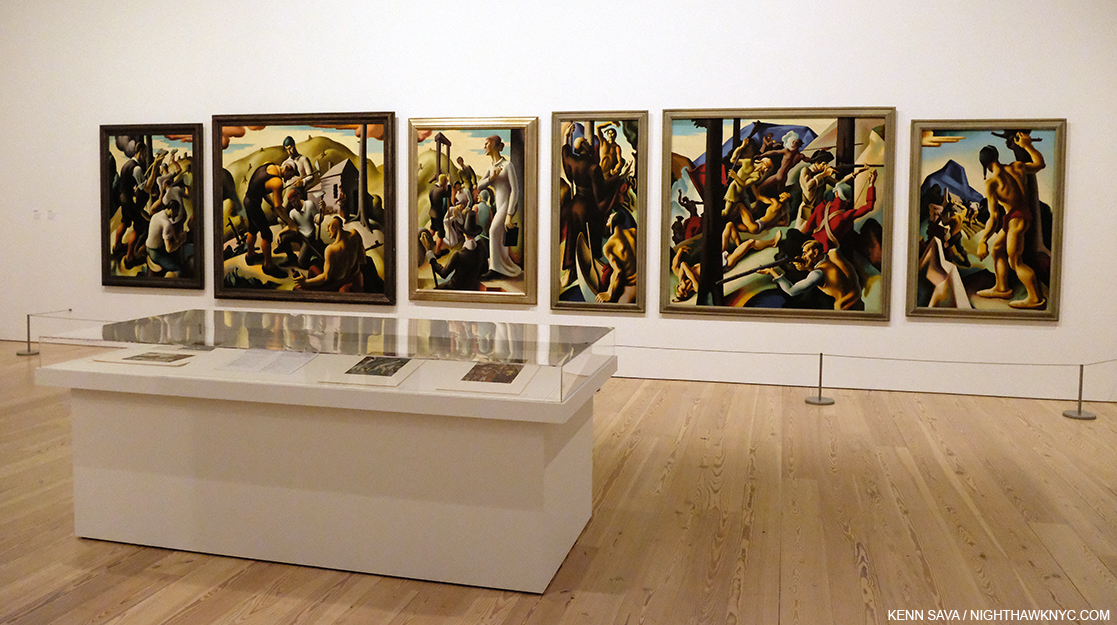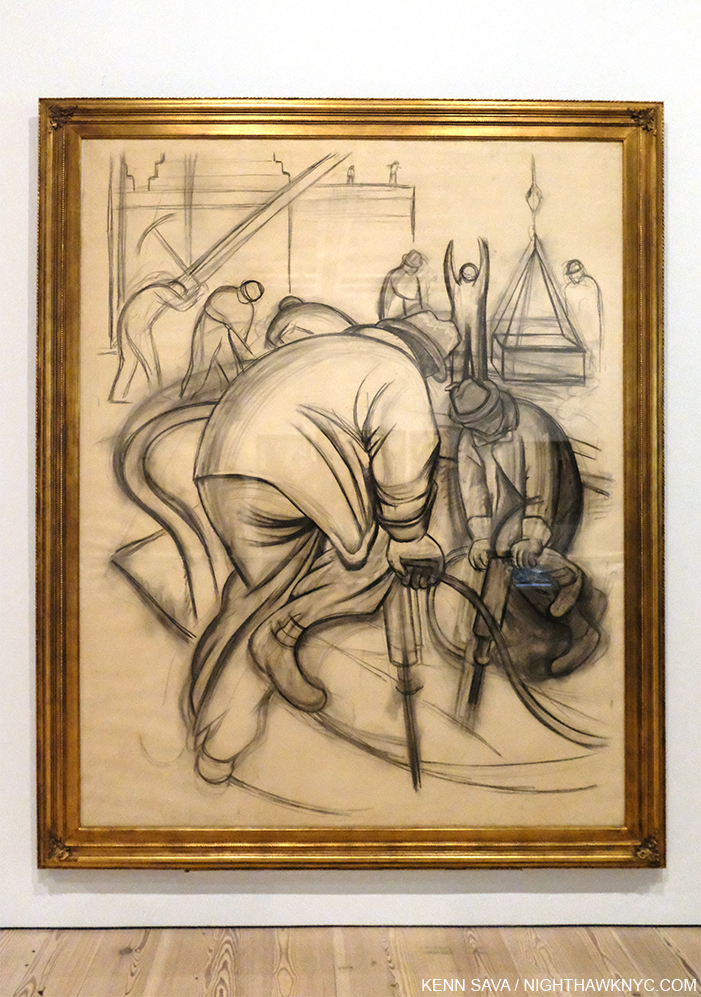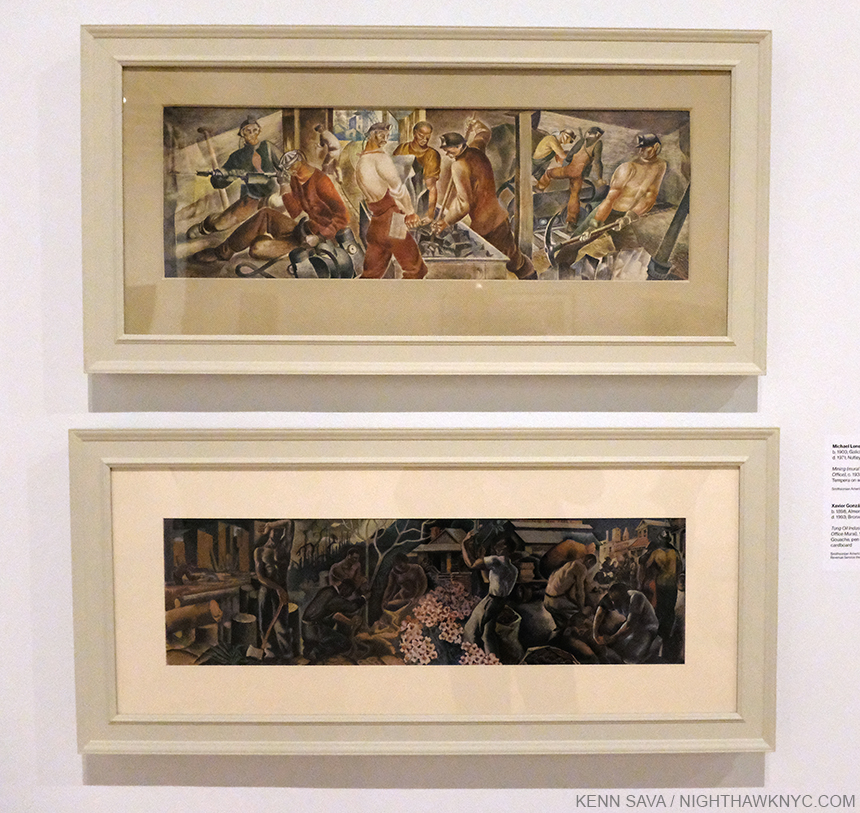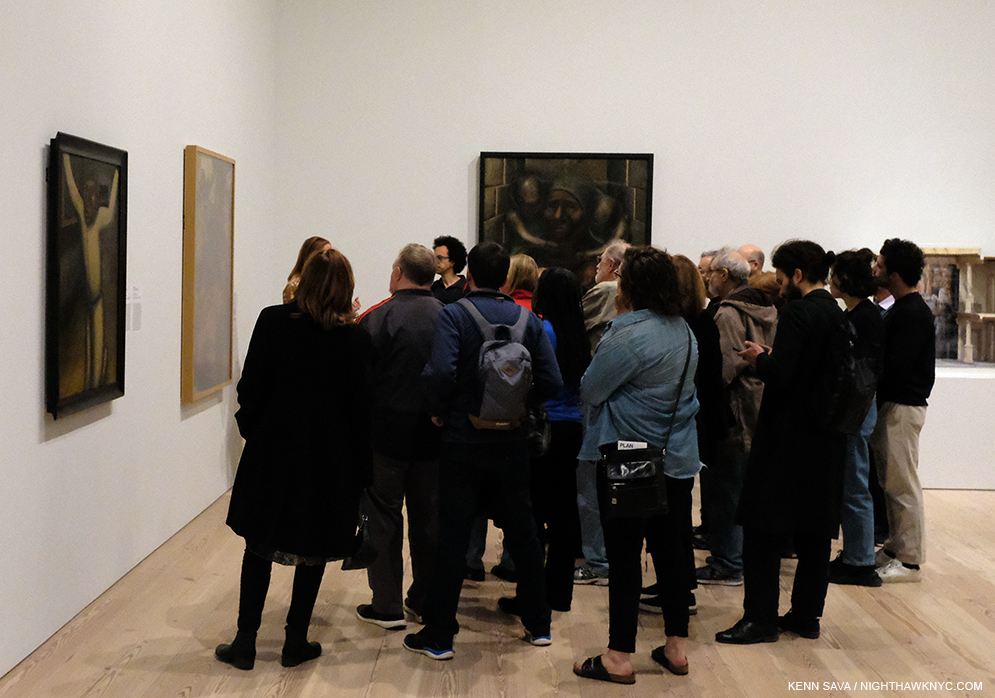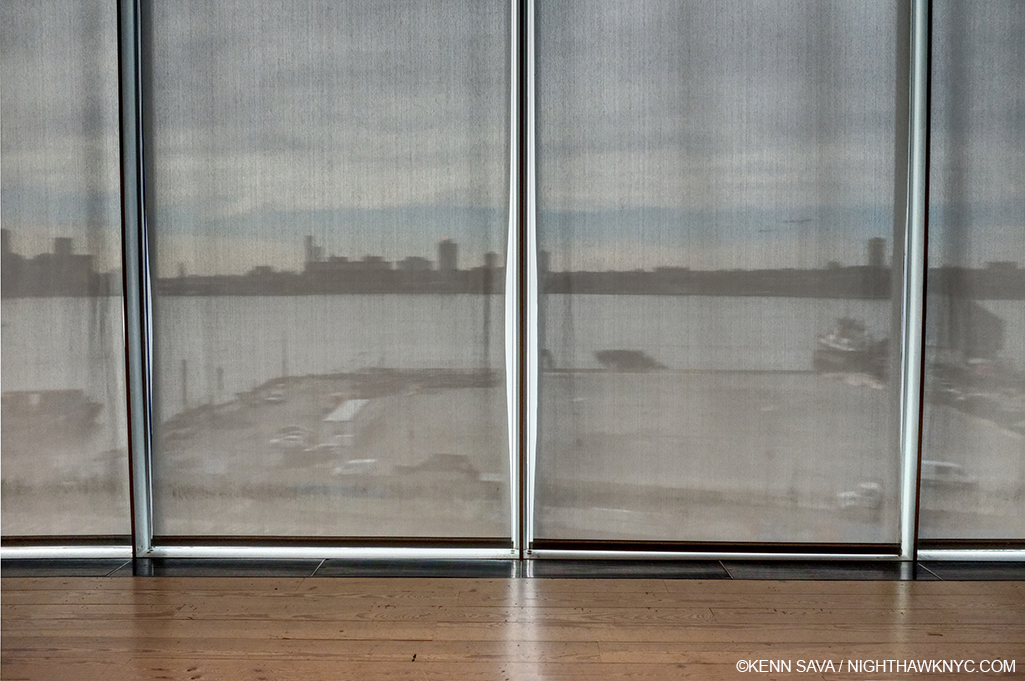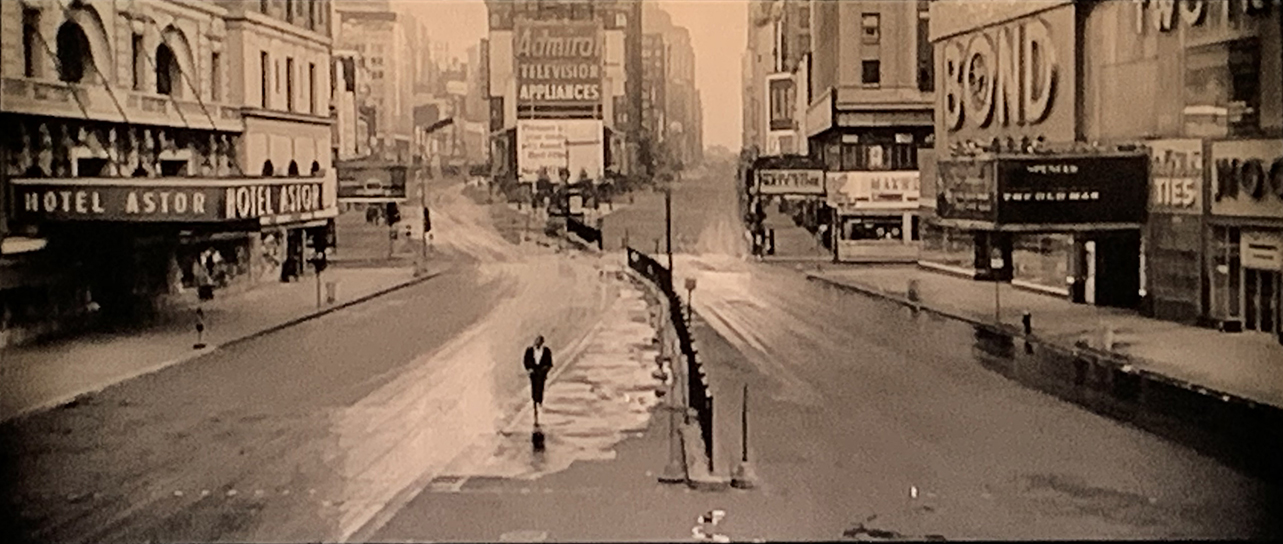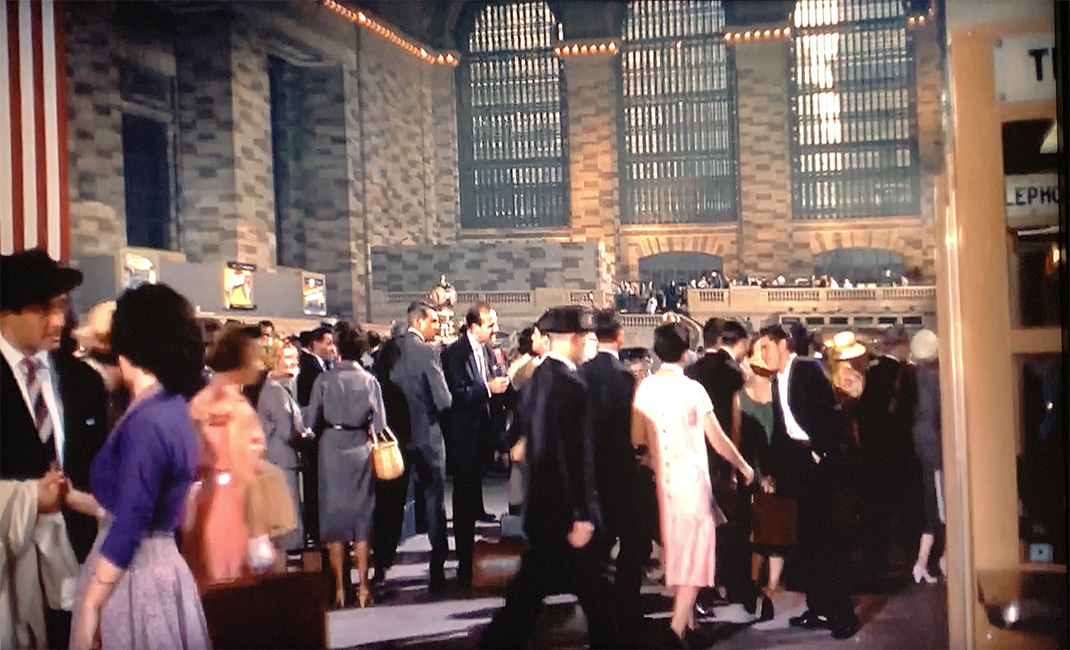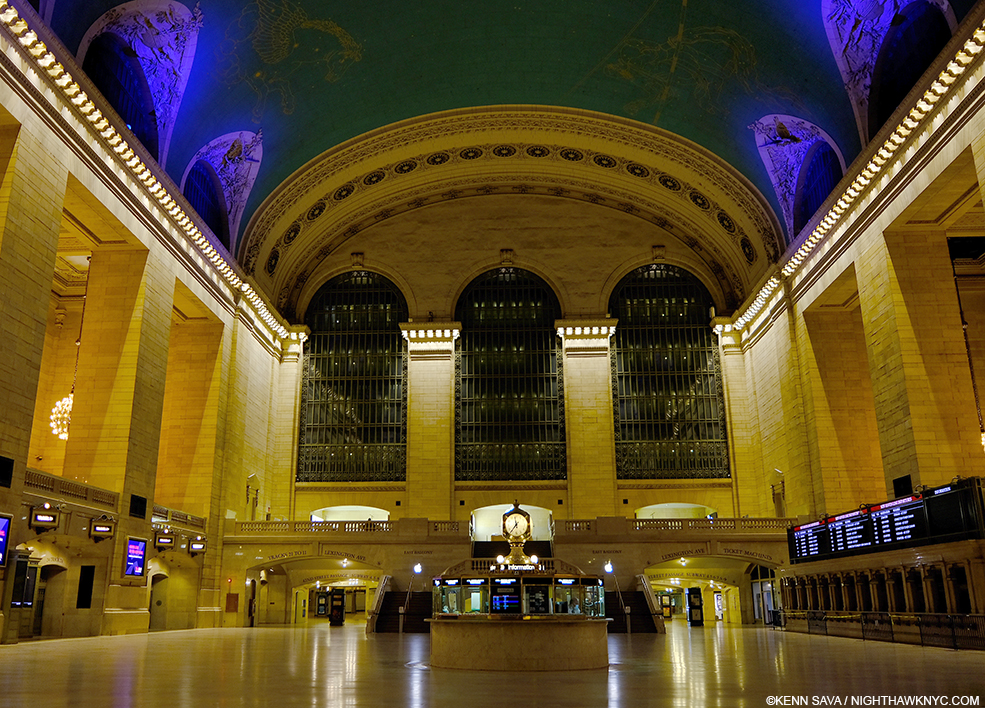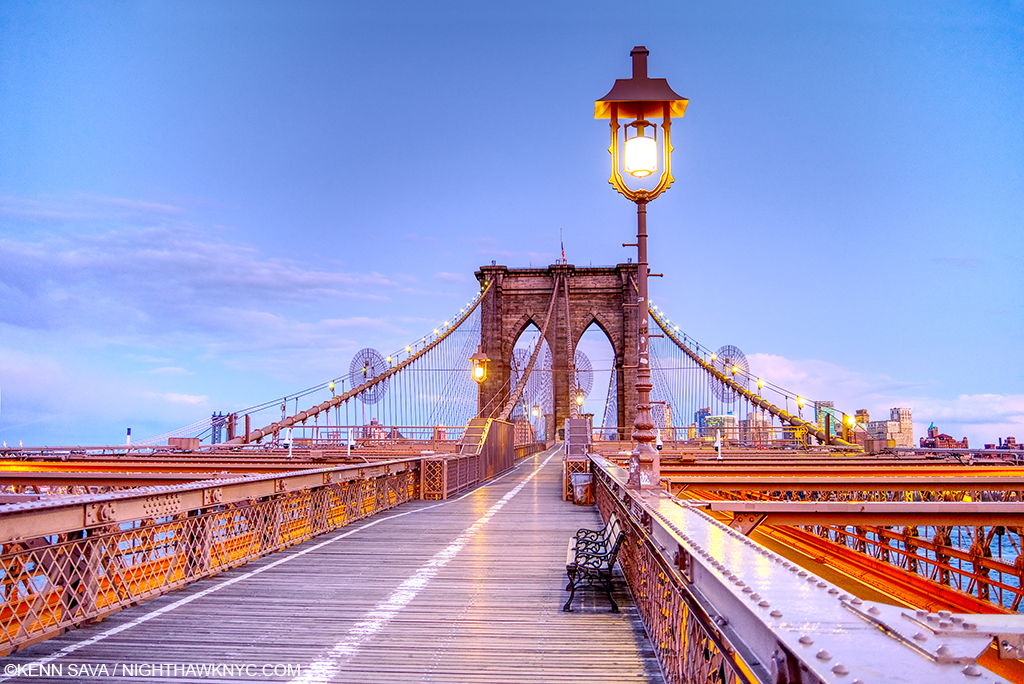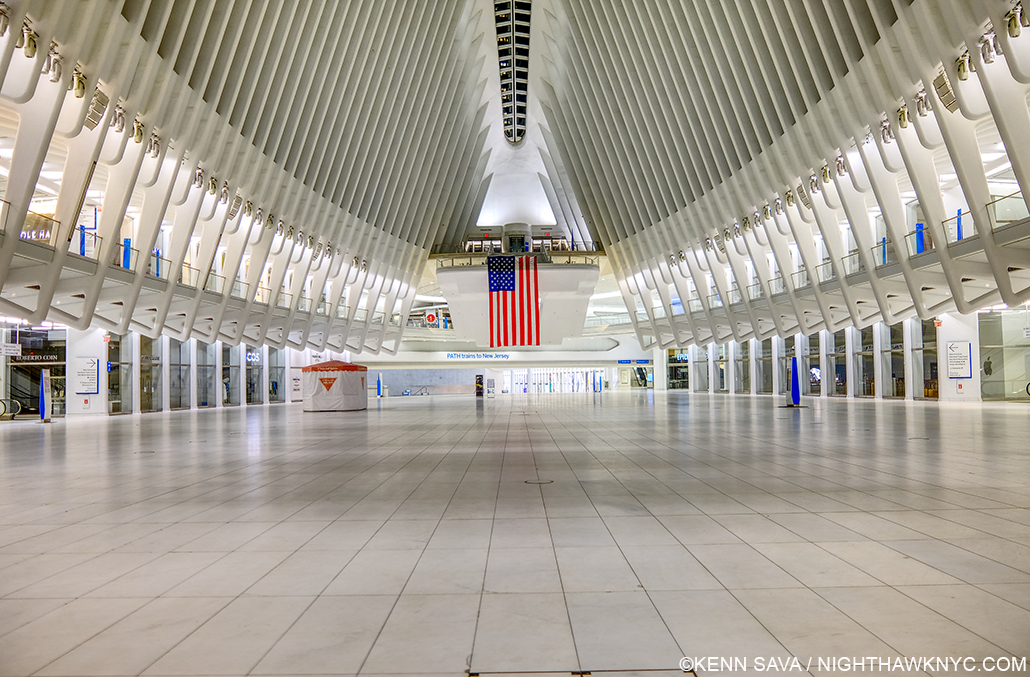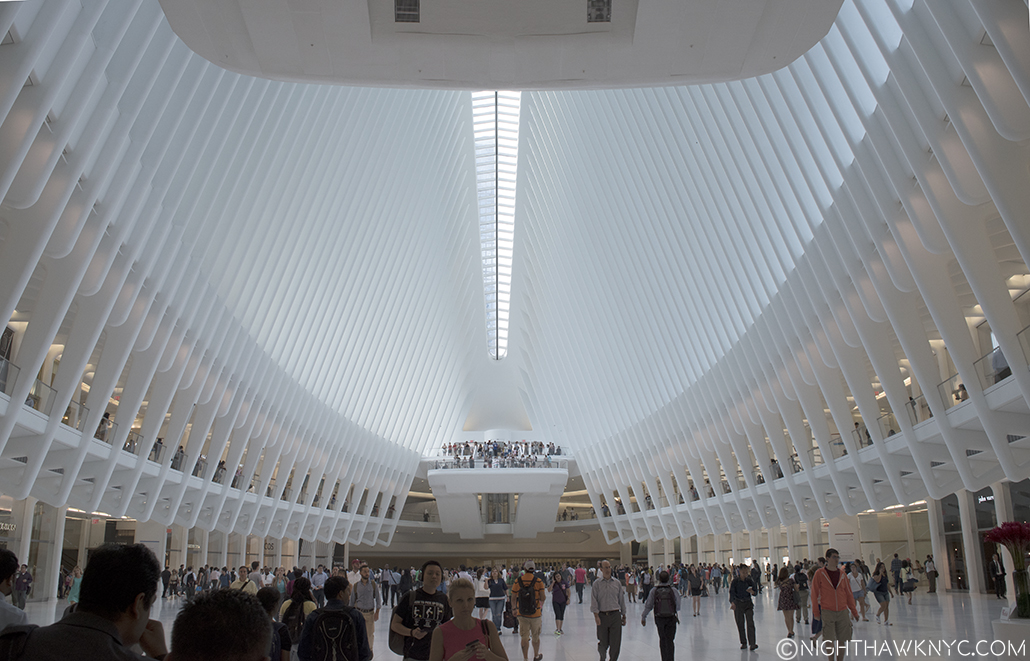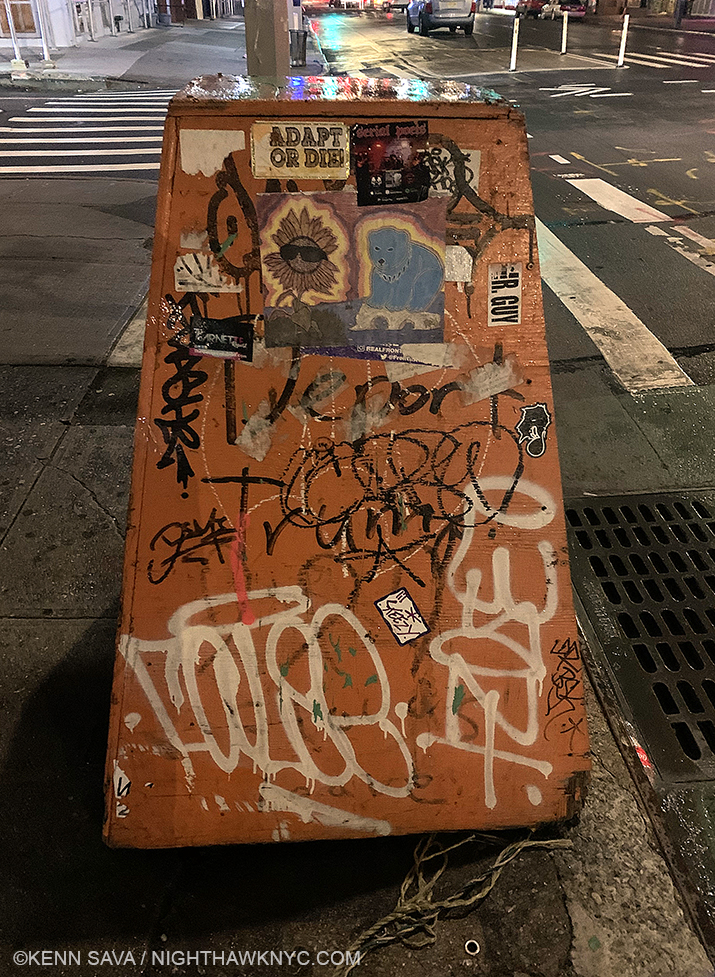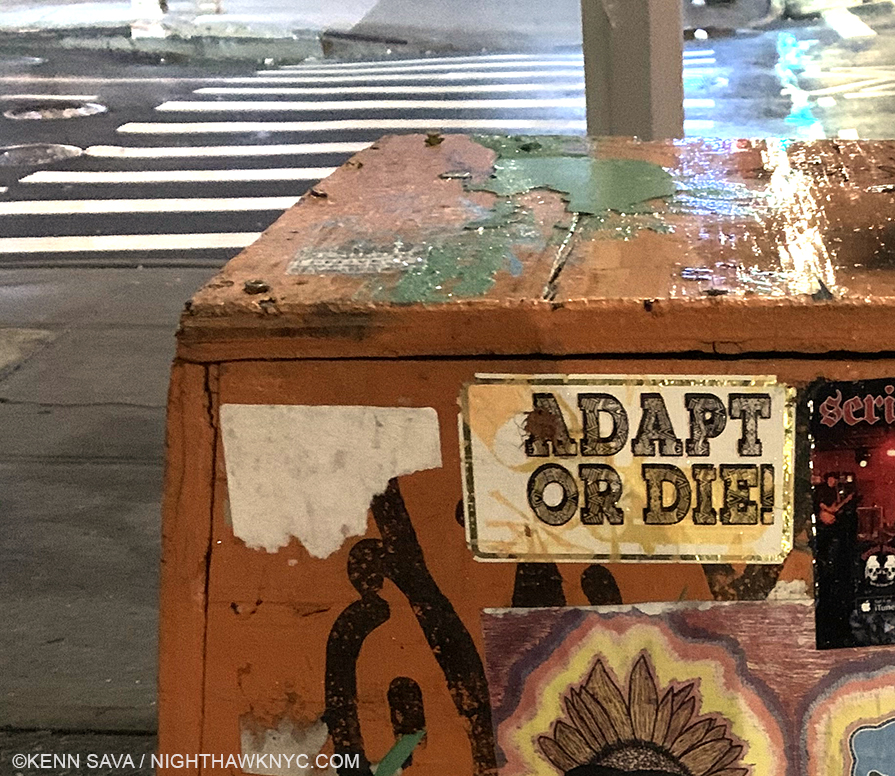Written & Photographed by Kenn Sava
Part 1- A Hush All Over The World
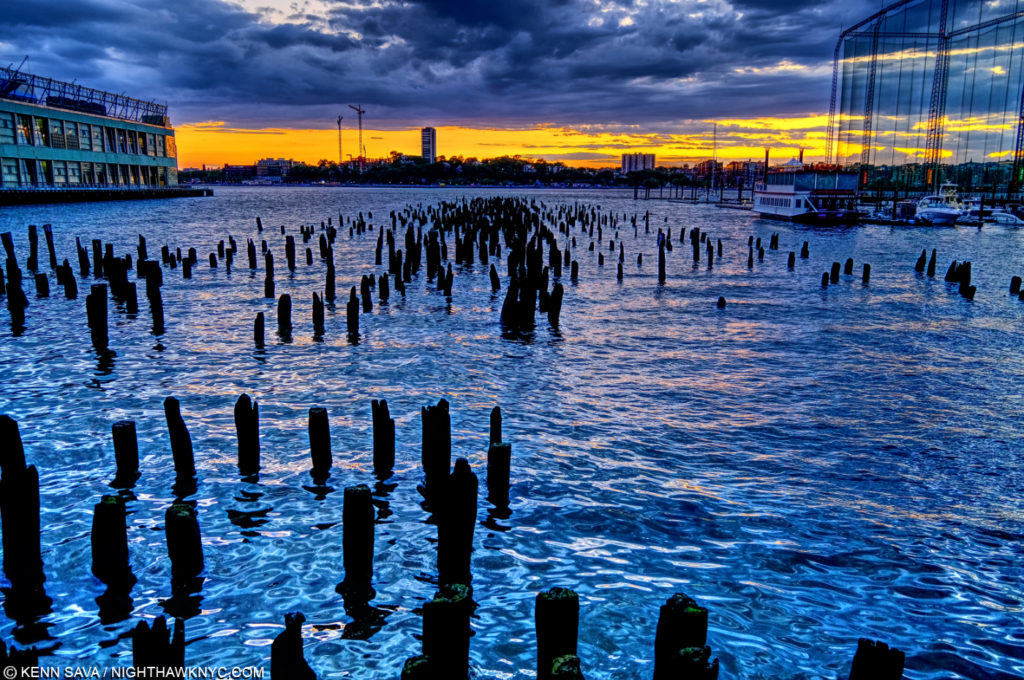
Last call. Hudson River, 7:30pm, May 30, 2020. Immediately after I took this I had to hurry home to be off the streets before the 8pm curfew, the first time in my life I’ve lived under a curfew, let alone one during a pandemic. The scene, with the light going out, fits the reality of life at that moment.
It was exactly a year since I was able to see Art when I left The Met Breuer on March 8, 2020, for what turned out to be its last day ever, with the NYC covid shutdown commencing the following day, It was longer than I thought it would be that day, but much shorter than I thought it would be when we were in the heart of the shutdown with the City being the epicenter of one of the worst outbreaks of the virus to that point a few months later. Over 32,000 have died from covid in NYC alone as I write this. I count myself lucky not to be one.
Since I started regularly going to see Art in 1980, this was the longest I hadn’t been able to do so in person.
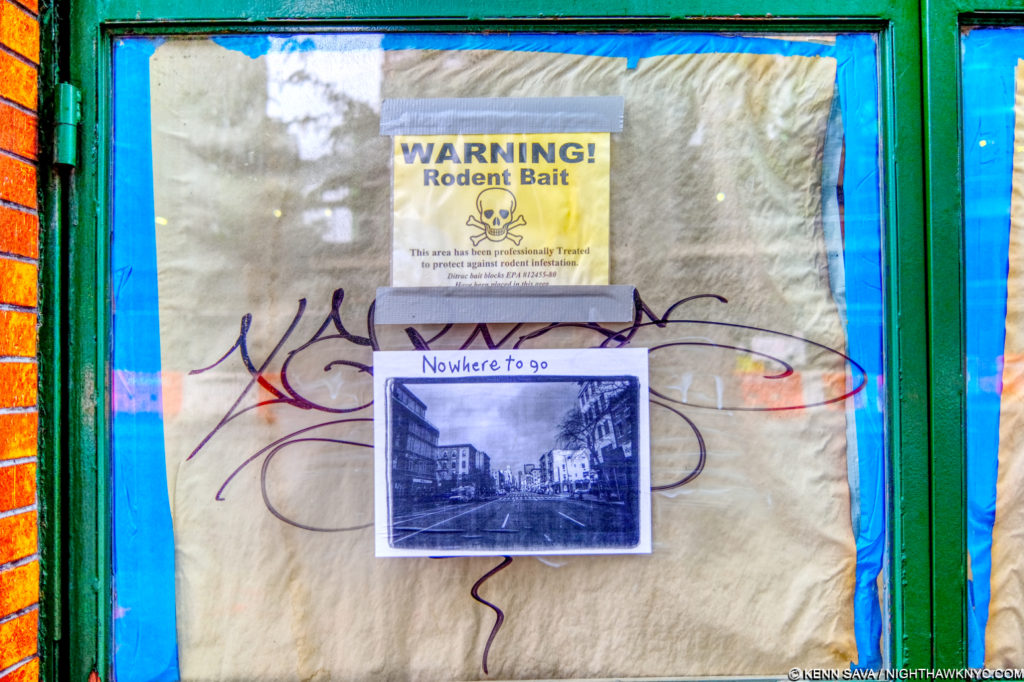
Someone posted this captioned photo on a window of the shuttered Park Restaurant that summed up one aspect of life in NYC in the pandemic. Here I need to clear something up. In April, 2020, I posted a slideshow of a “deserted” NYC. Yes, the streets were empty- day and night. But that was largely because everyone was staying home- as they should have, and only going out for essential errands.
During that time, a time I spent entirely alone (450+ days, and counting), Art & PhotoBooks were my friends and family. They enabled me to keep seeing & exploring Art & Photography, and actually continue to discover Artists & Photographers. Of course, during the shutdown, the only way I could see books were in my library or by USPS delivery.
I must digress here.
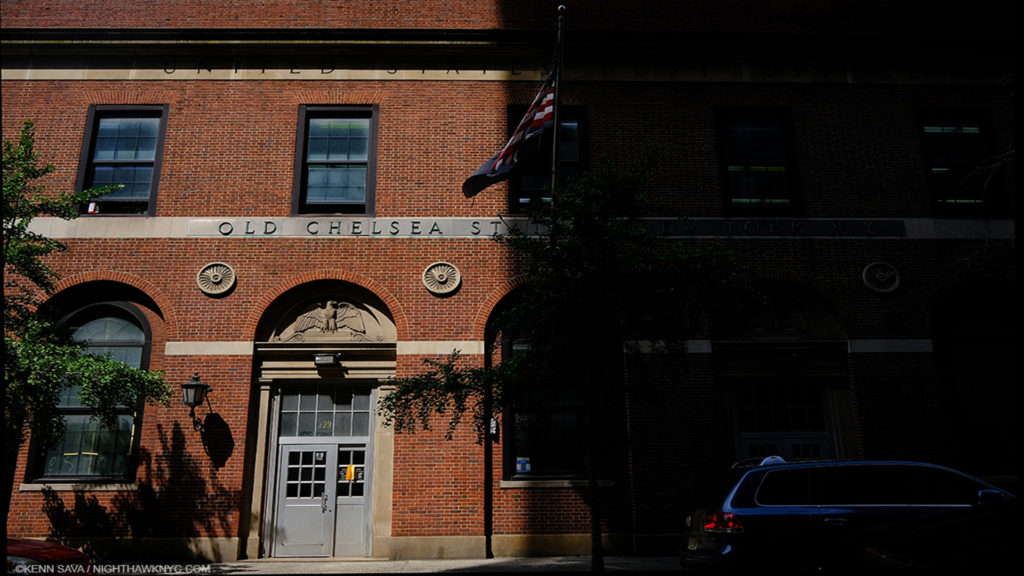
The shadows half engulf the embattled West 18th Street Post Office, May 29, 2020, during the height of the pandemic in NYC and during the height of the discussion about cutting the funding of the USPS. Yet, through it all, Manager Miss Lloyd and staff showed up almost every day and persevered throughout enabling people like me to get potentially life-saving supplies.
My debt to the Post Office goes much deeper. In a pandemic everything quickly disappears from store shelves. All I had was a bandana until the USPS was able to deliver some masks to me in July. Isopropyl Alcohol took a while longer to find, and I finally found some in a store after months of looking.
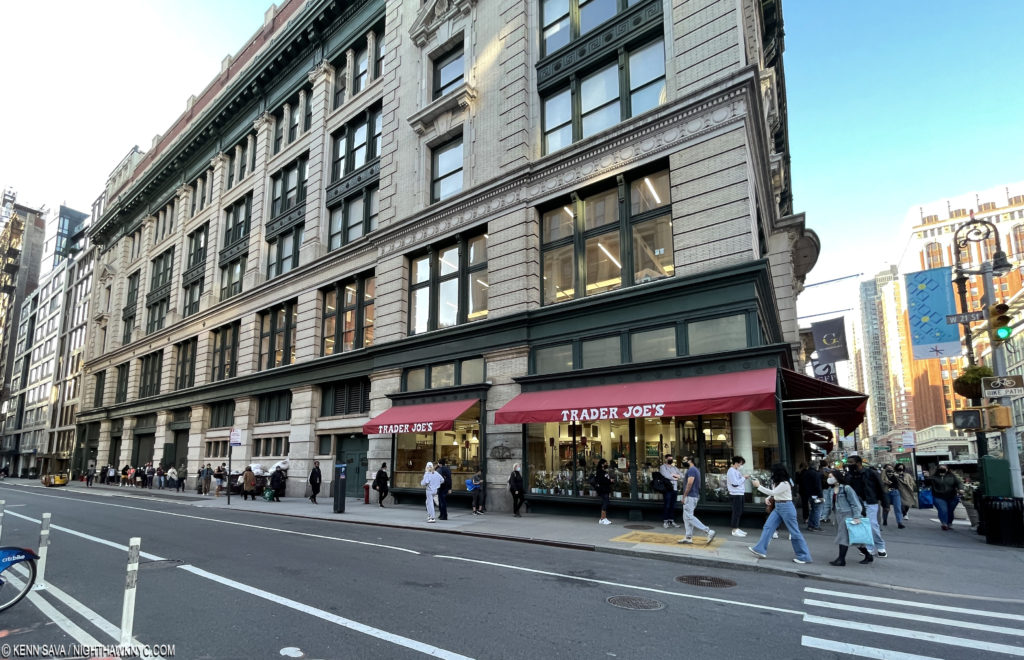
The new normal. The line for Trader Joe’s extends hundreds of feet down the street to the left and 100 feet in front. April 5, 2021.
Through it all, the staff at Trader Joe’s were positively heroic in keeping this community going, only closing for a couple days here and there when a team member got sick for extra cleaning. Completely uncharted ground for them, they quickly emerged as a role model business in terms of how they adapted and carried on, modifying and inventing procedures to keep their team and the public safe.
ALL of these heroic essential workers deserve our highest thanks and gratitude. If and when this ends, there should be a parade for them down the Canyon of Heroes.
I don’t know what to say about the countless medical professionals who hung in there during the worst of times, especially those who treated me right in the middle of it for a non-covid related condition, and particularly those who lost their lives trying to help and save others. The tragic story of Dr. Lorna Breen, who worked for the hospital that saved my life in February, 2007, broke my heart when I heard about it. “It’s OK Not To Be OK” were words I took seriously. They are wise- to a point.
Only you can judge if you need real, professional, help, or not, when you are locked down, or overwhelmed, as Dr. Breen apparently was. As a victim of suicide, I can’t stress enough that while it is “OK Not To Be OK” for a while, if you continue to not be OK, reach out and get help- by phone, online, or in person.
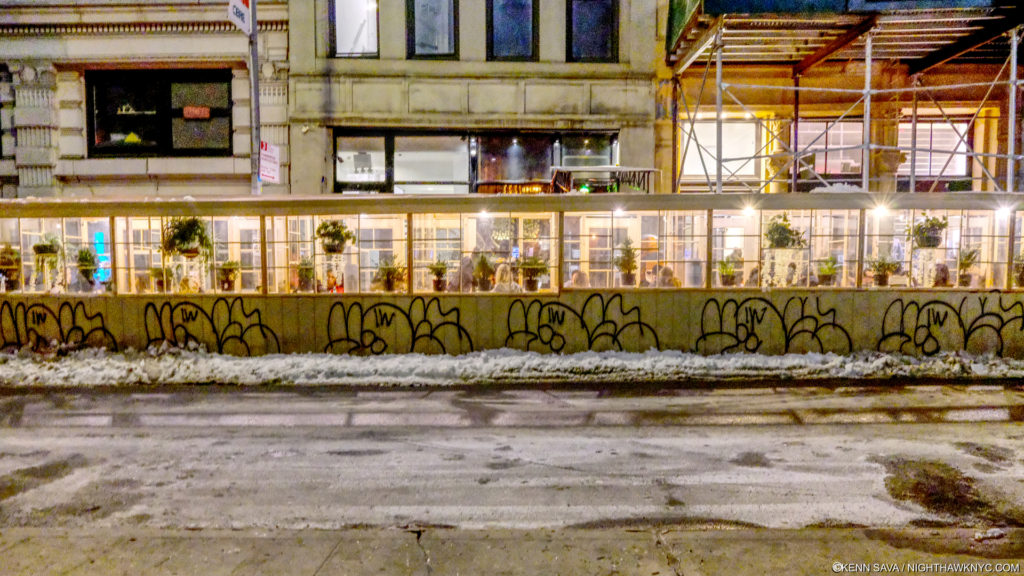
Outdoor dining in the middle of winter in a structure built right IN West 17th Street. February 20,2021. Yes, that structure, and many others, was built right in the street! I admire the creativity restaurants showed in staying open once they were allowed to, though it seemed too unsafe for me. Their creative mindset is an example for other businesses struggling to survive the pandemic.
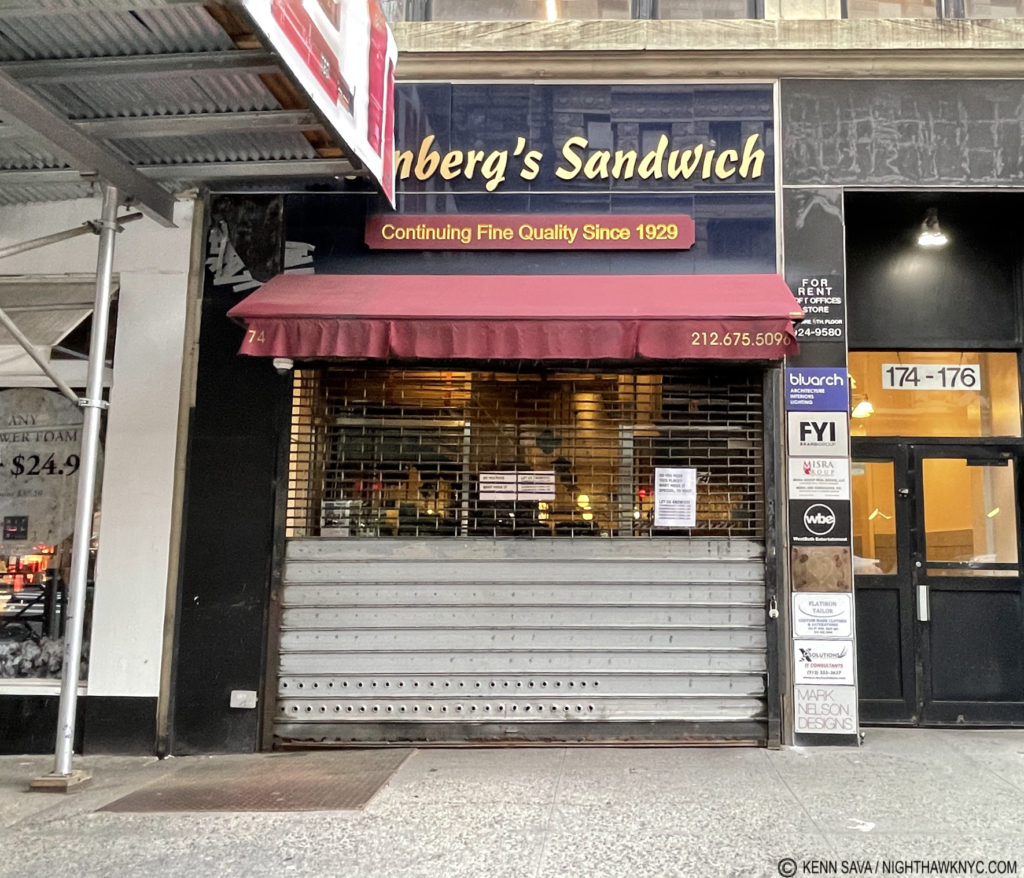
Many of them did not. In April, the legendary Eisenberg’s Sandwich Shop, 174 Fiffh Avenue, closed after 92 years. I doubt the space was ever remodeled in that time allowing you to walk into the past anytime you went in. It was one of Anthony Bourdain Top Restaurants (#11) in NYC, and one of mine. Every time a place like this closes a part of NYC goes with it, probably never to be replaced. While, many high end galleries got SMA loans, which continues to mystify me, most small businesses did not.
Spending so much time on my own, what did I do besides read Art & PhotoBooks? I took pictures every single day, during excursions I timed when almost no one would be out. I did no writing, but a lot of thinking. I dipped my toe into the ocean of Instagram, though I am no fan of monopolistic social media as it is. It was a VERY strange feeling walking around without a list of Art shows to go see in my pocket. What to do? I just wandered aimlessly, and sure enough, I saw something new, surprising or shocking, which takes a lot after 30 years of living here.
Other than that, I have been silent. Still, much to my surprise, readership continues to climb, which I try to not think means that people like the site better without me, and I continue to hear from readers all over the world. As always, Thank You for reading my pieces. I hope this finds you & yours well where it finds you.
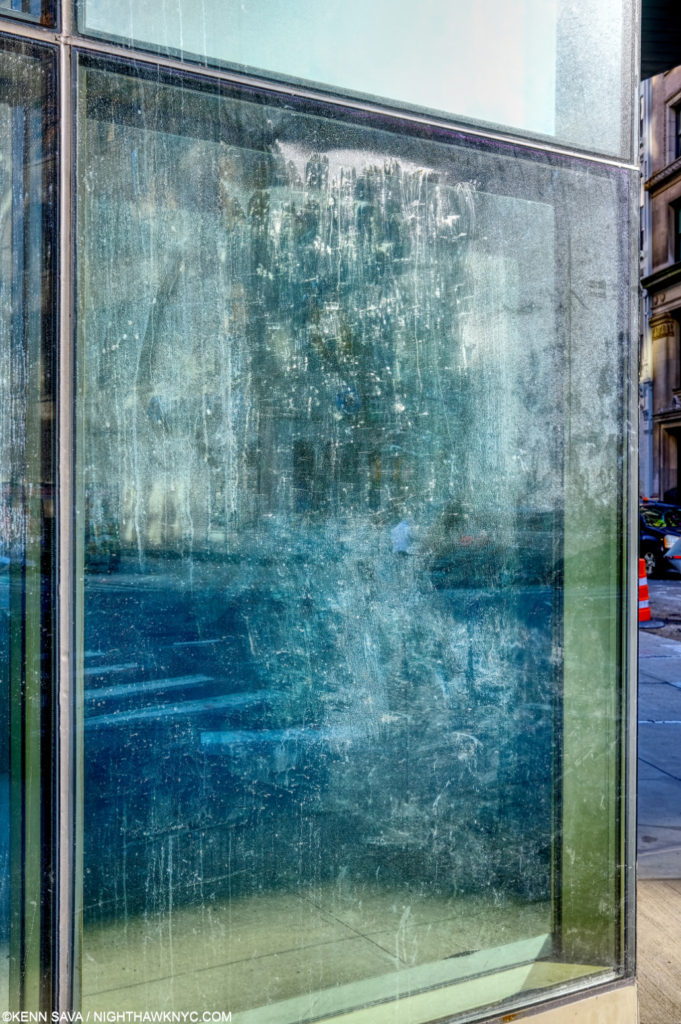
Coming Attractions? This window on a shuttered multiplex movie theater usually features posters of what’s playing or coming. Now it serves to make me wonder what the future holds. February, 2021.
I’m a different man than I was when I left The Met Breuer on March 8, 2020. I had NO idea what I, NYC, or the world was in for in the coming weeks and months. Much still remains unknown. I’ve survived the worst of the covid pandemic in NYC (knocking hard on wood). Along the way, I’ve survived a number of unrelated crisis that were made exponentially more difficult because everything was closed here. Yet, I got through all of them with no help from anyone, except those mentioned above.
As the vaccine took effect, I turned my sights to going to see Art, again. Yet, I say that with a certain amount of guilt. There are too many, many, many people in this country and around the world without access to the vaccine! And, there’s little to no information as to when they might get it. The pandemic has been horribly managed virtually everywhere in the world. If the distribution of the vaccine continues to be as badly managed, any recovery will also be delayed. At the cost of how many more lives?
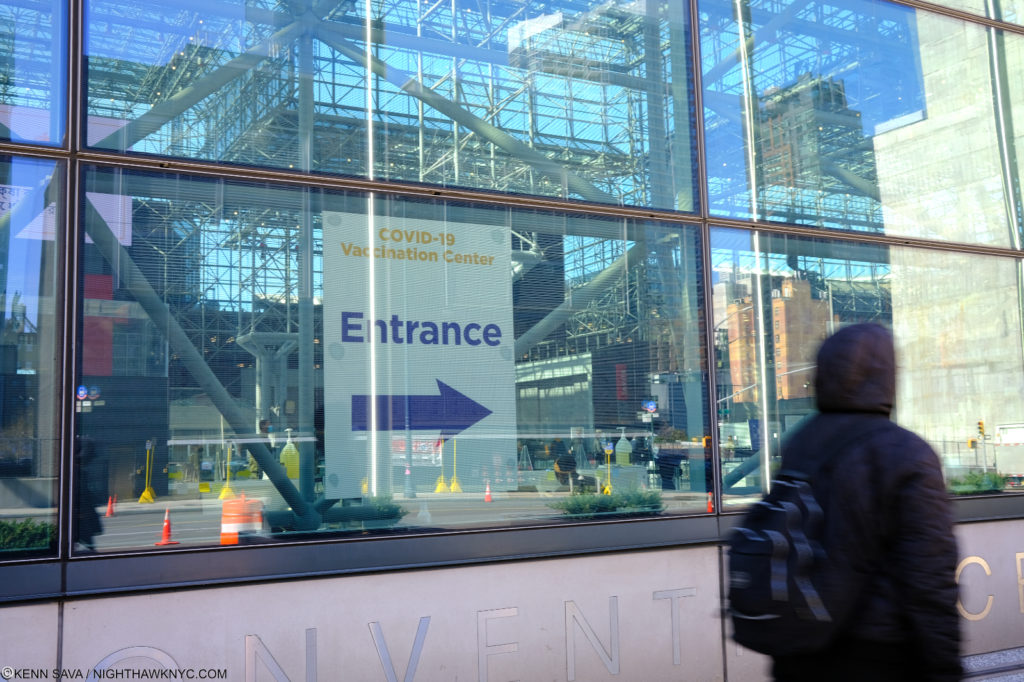
A woman about to be vaccinated. The Javitz Convention Center has been put to good public use since covid hit. First as a US Army Temporary Hospital last year, and now as a mass vax site. I was vaccinated here twice, the first time I’d set foot in the place since it opened in 1986. If you’re on the fence about getting it? For the record I had absolutely NO SIDE EFFECTS either time. None. Zero. Not even a sore arm. Two weeks after Pfizer shot #2 it was fully effective I was told by the Registered Nurse who gave it to me.
And, I’ve yet to hear anyone mention something else very important- It’s almost MIRACULOUS that a covid vaccine has been developed in a year!
Look at the history of pandemics and scourges. 2021 marks FORTY years since the CDC first officially reported what would be called AIDS, there is STILL no HIV vaccine! William Shakespeare lived his entire life under the threat of the plague, which devastated London no less than 3 times during his lifetime. The plague was a scourge that lasted from 1350 to well into the 1800s! So, WE ARE INCREDIBLY LUCKY a vaccine was found so quickly. I shutter to think what 1, 2, 3 more years without a vaccine would have looked like.
Why I digressed…
Art, unless you make it yourself, is a luxury, “important” only once the main necessities of life and well-being have been covered. As I ventured back to see Art I had everything I’ve said thus far, and everything I’ve been through this past year, on my mind.
Part 2- Temperature Check
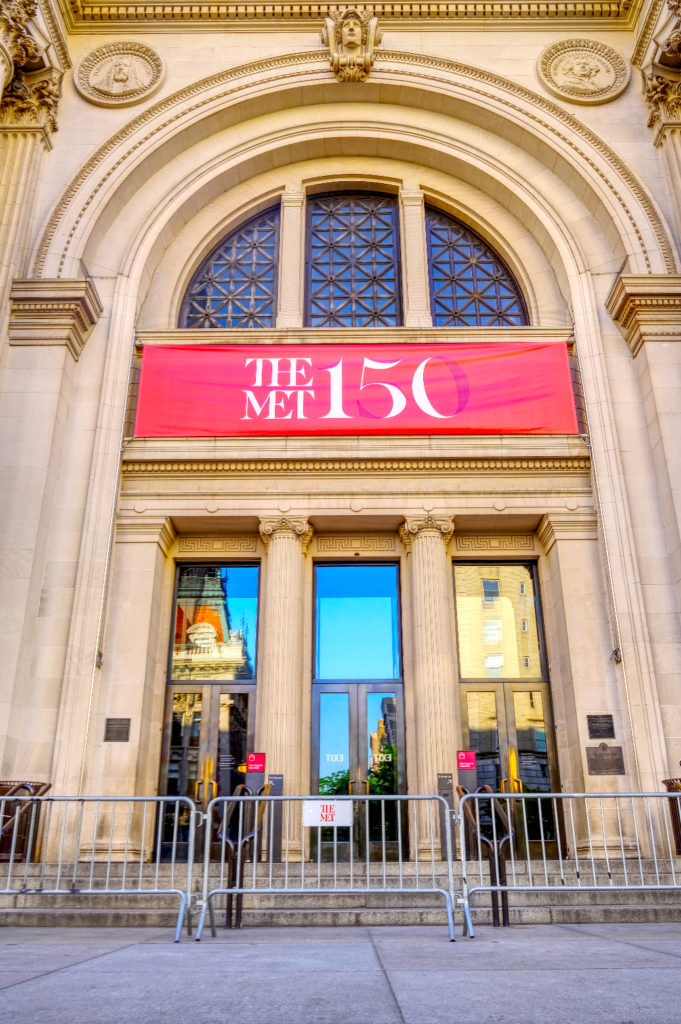
The Met’s famous main entrance, gated, during the 5 months it was closed, unprecedented in my lifetime, May 21, 2020.
Going to The Met or MoMA now (April, 2021) is a very, very strange experience.
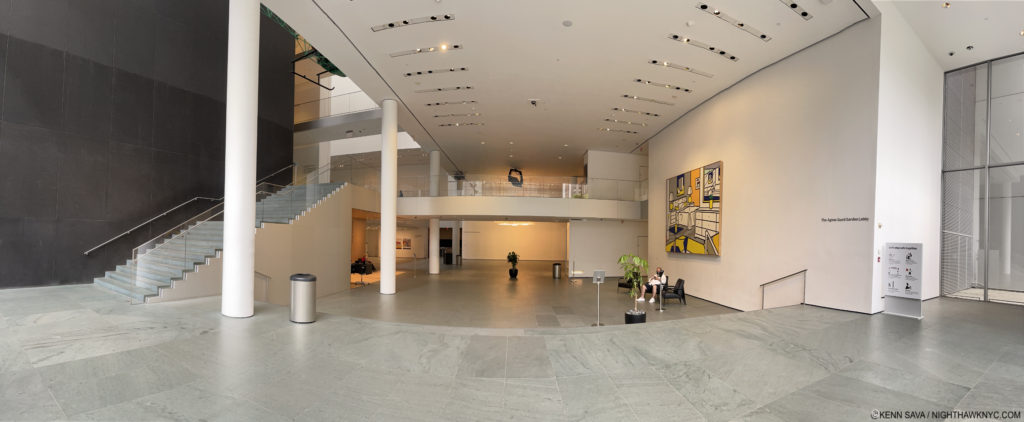
MoMA, Main Lobby Entrance, April 29, 2021. Even 5 minutes before closing I NEVER saw it like this. This is usually crowded with people and staff. It’s daytime! Note the sun streaming in from the famous Sculpture Garden directly behind me.
They were both almost entirely empty on weekdays when I’ve been there. In some ways, it’s a dream for me. I can have almost any gallery I want completely to myself.
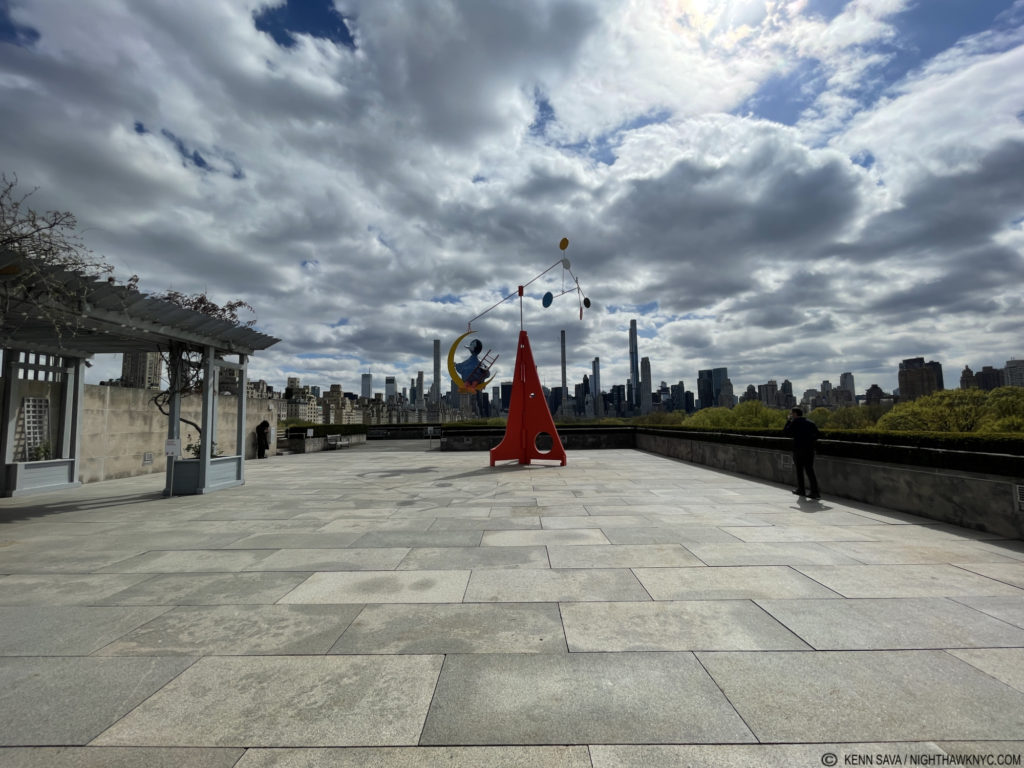
The Met’s Roofdeck, April 22, 2021. Looking around, I felt that perhaps I wasn’t supposed to be here? But, there is a guard way off on the left.
The only exceptions were The Met’s dual blockbuster shows- Goya’s Graphic Imagination and Alice Neel: People Come First. The times I went I waited 15 minutes to get in to each show.
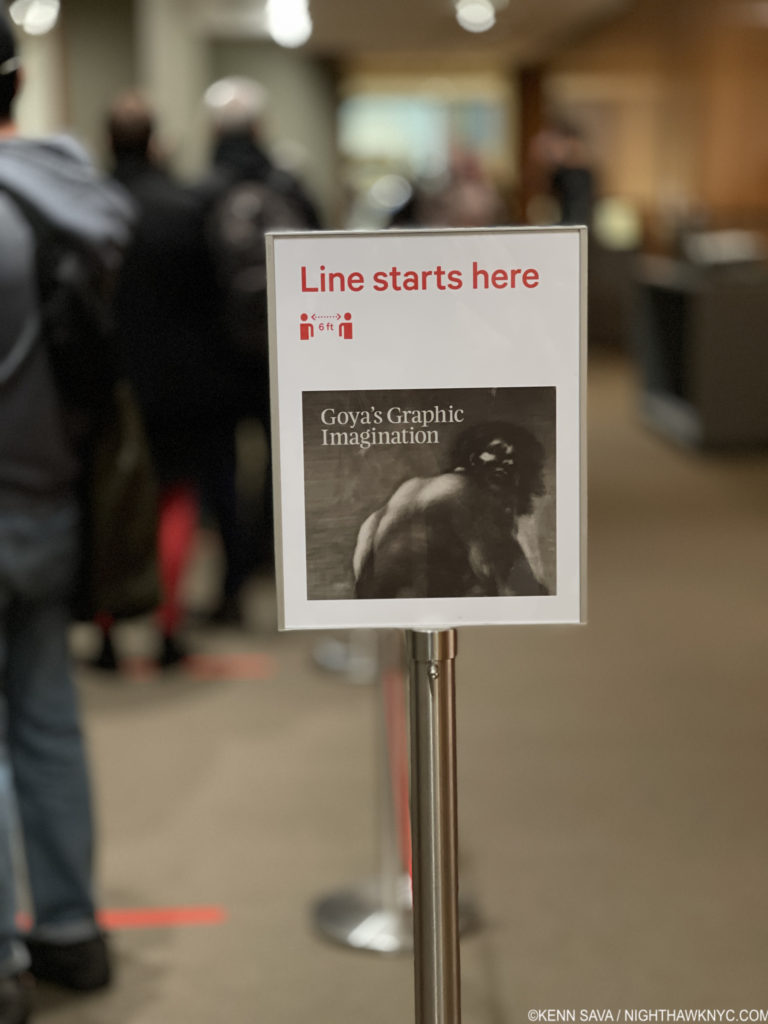
April 22, 2021. This terrific show opened in early February, when virtually no one had been vaccinated and closed on May 2nd as more were just beginning to be. Very unfortunate timing for a great and timely show of work too rarely seen in this depth & breath due to their fragility.
On subsequent visits I asked people in the front of the line how long they waited and they also responded 15 minutes. The lines are due to The Met’s safety procedures and not letting the galleries get too crowded so visitors can maintain distance. Once inside, I thought they were “comfortably” occupied with ample distance. The lines are interesting because the Goya show was about to end on May 2nd, which generally would cause lines to get in, pre-pandemic, but the Alice Neel show had only opened on March 22nd. That means expect longer lines to see it as the summer progresses. Both shows will live on and continue to be discussed. I am disappointed The Met did not extend the Goya show, or schedule it to open later in the year, so more people could see it as more are vaccinated. Alice Neel: People Come First is a landmark show, perhaps the most important Painting show in NYC since Kerry James Marshall: Mastry because it demonstrates how contemporary Alice Neel remains- as a woman, an Artist/mother and as a thinker and activist. Her position in the canon of great Artists of the 20th century had been established by the regular shows her work has increasingly received over time, including the Whitney Retrospective on the centennial of her birth in 2000, and most recently, Alice Neel, Uptown at Zwirner in 2017, which I covered.
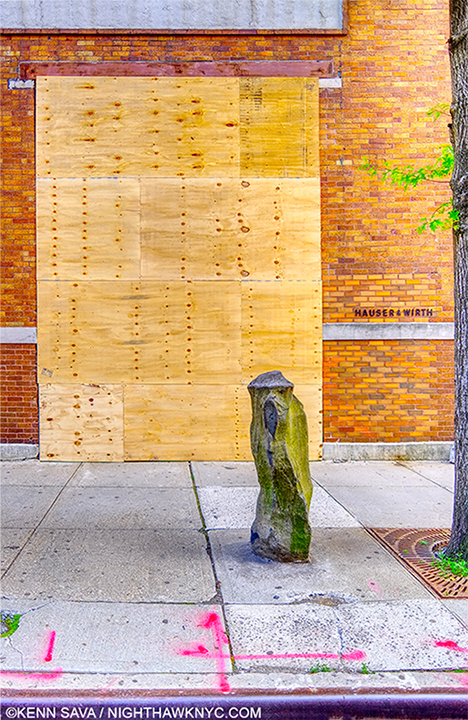
The boarded up Hauser & Wirth Gallery, an SMA Loan grantee, on West 22nd Street behind Joseph Beuys columnar basalt stone, June 4, 2020. Public Art, like the Beuys seen here, was not boarded up.
Elsewhere around town, most galleries seem to be open for business, those that are left that is, each with their own terms. The carnage that has devastated small business has not spared the smaller galleries. A walk down West 26th Street showed that perhaps 50% of galleries are gone (It could be higher since some entire multi floor buildings were devoted to galleries and I have not gone into them to do a headcount). Among the survivors, some will let you right in. Some with an appointment only. Some are requiring info for contact tracing and/or temperature checks, all are requiring masks and distancing. That’s from reading signs on the doors as I walk past. I’ve only been to a few gallery shows. From the email I get, the number of shows is drastically lower than it was. It should be said that the summer is always slow(er) here so perhaps galleries are getting ready to be more active post-Labor Day. I also haven’t been able to get a sense of Art world employment and the current status of the many who were laid off or furloughed during the shutdown.
As for the Art market, I have noticed some softening in asking prices around town, though of course that depends on who and what we’re talking about1. Is this a buying op, or a harbinger of a long overdue market correction? It’s still very early in the recovery (if it is the recovery), and a bit hard to tell where things are heading,
It seems to me that most of it will depend on how quickly more people get vaccinated everywhere around the world so the world as a whole can begin to recover. Art is global, made & traded virtually everywhere, but that’s only one instance of how interconnected everyone and everything is. As poorly as the covid crisis has been handled everywhere much now depends on how well the global vaccine distribution is handled. The pandemic will only end as quickly as the vaccines can reach those who need it. Only then can the world truly begin to heal and a real recovery begin.
And we can can get back to exploring Art.
*- Soundtrack for this Post is “Spring Is Here,” composed by Richard Rogers & Lorenz Hart and recorded by Frank Sinatra on his immortal Sings For Only The Lonely, 1958. Rogers & Hart are among the very greatest songwriters of all time in my opinion and Lorenz Hart’s lyrics remain extremely under appreciated. Heard here in a gorgeous 2018 stereo mix where you can fully appreciate the brilliant arrangement by Nelson Riddle-
“Once there was a thing called spring
When the world was writing verses like yours and mine
All the lads and girls would sing
When we sat at little tables and drank May wine
Now April, May and June are sadly out of tune
Life has stuck a pin in the balloon
Spring is here! Why doesn’t my heart go dancing?”
NighthawkNYC.com has been entirely self-funded and ad-free for over 6 years, during which over 250 full length pieces have been published. If you’ve found it worthwhile, you can donate to keep it going & ad-free below. Thank you!
Written & photographed by Kenn Sava for nighthawknyc.com unless otherwise credited.
To send comments, thoughts, feedback or propositions click here.
Click the white box on the upper right for the archives or to search them.
For “short takes” and additional pictures, follow @nighthawk_nyc on Instagram.
Subscribe to be notified of new Posts below. Your information will be used for no other purpose.
- The auction market seems to still be as strong as ever. Auctions are primarily resales of Art, whereas many galleries are selling new Art. ↩

